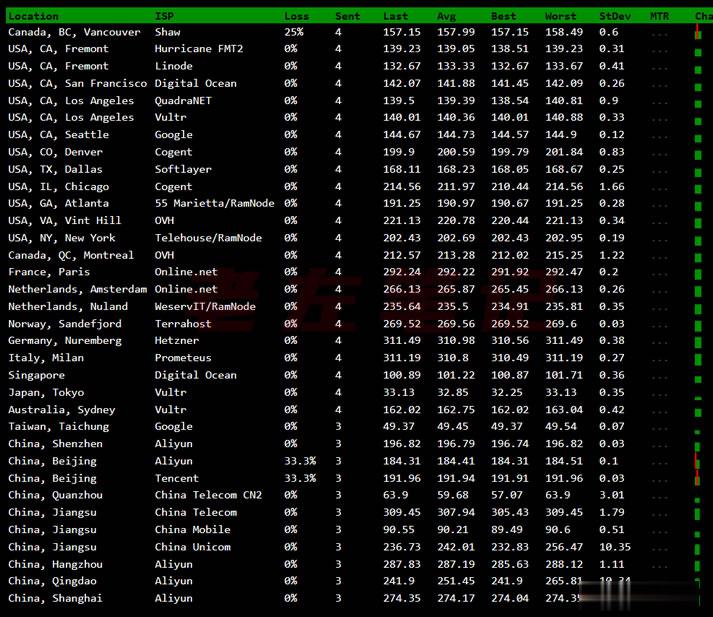examinationmathway
mathway 时间:2021-04-02 阅读:()
THECARNEGIEFOUNDATIONFORTHEADVANCEMENTOFTEACHINGProblemSolutionExplorationPapers51VistaLaneStanford,CA94305telephone:650.
566.
5100fax:650.
326.
0278www.
carnegiefoundation.
orgWHATCOMMUNITYCOLLEGEDEVELOPMENTALMATHEMATICSSTUDENTSUNDERSTANDABOUTMATHEMATICSJamesW.
Stigler,KarenB.
Givvin,andBelindaJ.
ThompsonUniversityofCalifornia,LosAngelesDRAFTDRAFTDRAFT1WhatCommunityCollegeDevelopmentalMathematicsStudentsUnderstandaboutMathematicsJamesW.
Stigler,KarenB.
Givvin,andBelindaJ.
ThompsonUniversityofCalifornia,LosAngelesWhatCommunityCollegeDevelopmentalMathematicsStudentsUnderstandaboutMathematicsThenationisfacingacrisisinitscommunitycolleges:moreandmorestudentsareattendingcommunitycolleges,butmostofthemarenotpreparedforcollege-levelwork.
Theproblemmaybemostdireinmathematics.
Bymostaccounts,themajorityofstudentsenteringcommunitycollegesareplaced(basedonplacementtestperformance)into"developmental"(orremedial)mathematicscourses(e.
g.
,Adelman,1985;Baileyetal.
,2005).
Theorganizationofdevelopmentalmathematicsdiffersfromschooltoschool,butmostcollegeshaveasequenceofdevelopmentalmathematicscoursesthatstartswithbasicarithmetic,thengoesontopre-algebra,elementaryalgebra,andfinallyintermediatealgebra,allofwhichmustbepassedbeforeastudentcanenrollinatransfer-levelcollegemathematicscourse.
Becausethewaymathematicshastraditionallybeentaughtissequential,theimplicationsforstudentswhoareplacedinthelower-levelcoursescanbequitesevere.
Astudentplacedinbasicarithmeticmayfacetwofullyearsofmathematicsclassesbeforeheorshecantakeacollege-levelcourse.
Thismightnotbesobadiftheysucceededinthetwo-yearendeavor.
Butthedatashowthatmostdonot:studentseithergetdiscouragedanddropoutalltogether,ortheygetweededoutateacharticulationpoint,failingtopassfromonecoursetothenext(Bailey,2009).
Inthisway,developmentalmathematicsbecomesaprimarybarrierforstudentseverbeingabletocompleteapost-secondarydegree,whichhassignificantconsequencesfortheirfutureemployment.
OnethingnotoftenemphasizedintheliteratureistherolethatourK-12educationsystemplaysinthisproblem.
WeknowfrominternationalstudiesthatU.
S.
mathematicseducationismediocreatbestwhencomparedwithotherindustrializednations.
Butthefactthatcommunitycollegestudents,mostofwhomgraduatefromU.
S.
highschools,arenotabletoDRAFTDRAFTDRAFT2performbasicarithmetic,pre-algebraandalgebra,showstherealcostofourfailuretoteachmathematicsinadeepandmeaningfulwayinourelementary,middleandhighschools.
Althoughourfocushereisonthecommunitycollegestudents,itisimportanttoacknowledgethatthemethodsusedtoteachmathematicsinK-12schoolsarenotsucceeding,andthatthelimitationsofstudents'mathematicalproficiencyarecumulativeandincreasinglyobviousovertime.
ThelimitationsinK-12teachingmethodshavebeenwell-documentedintheresearchliterature.
TheTrendsInInternationalMathematicsandScienceStudy(TIMSS)videostudies(Stigler&Hiebert,1999;Hiebertetal.
,2003)showedthatthemostcommonteachingmethodsusedintheU.
S.
focusalmostentirelyonpracticingroutineprocedureswithvirtuallynoemphasisonunderstandingofcoremathematicsconceptsthatmighthelpstudentsforgeconnectionsamongthenumerousmathematicalproceduresthatmakeupthemathematicscurriculumintheU.
S.
Thehigh-achievingcountriesinTIMSS,incontrast,useinstructionalmethodsthatfocusonactivelyengagingstudentswithunderstandingmathematicalconcepts.
Proceduresaretaught,ofcourse,butareconnectedwiththeconceptsonwhichtheyarebased.
IntheU.
S.
,proceduresaremoreoftenpresentedasstep-by-stepactionsthatstudentsmustmemorize,notasmovesthatmakesensemathematically.
GiventhatU.
S.
studentsaretaughtmathematicsasalargenumberofapparentlyunrelatedproceduresthatmustbememorized,itisnotsurprisingthattheyforgetmostofthembythetimetheyenterthecommunitycollege.
Itistruethatsomestudentsfigureoutontheirownthatmathematicsmakessenseandthatproceduresforgottencanbereconstructedbasedonarelativelysmallnumberofcoreconcepts.
Andevenafewstudentswhodon'tfigurethisoutaresmartenoughtoactuallyremembertheprocedurestheyaretaughtinschool.
Butmanystudentsdon'tfigurethisout,andthesearetheonesthatswelltheranksofstudentswhofailtheplacementtestsandendupindevelopmentalmathematics.
Sadly,alltheevidencewehave(whichisnotmuch)showsthatalthoughcommunitycollegefacultyarefarmoreknowledgeableaboutmathematicsthanaretheirK-12counterparts(Lutzeretal.
,2007),theirteachingmethodsmaynotdiffermuchfromthoseusedinK-12schools(Grubb,1999).
"Drill-and-skill"isstillthoughttodominatemostinstruction(Goldrick-Rab,2007).
Thus,studentswhofailedtolearnhowtodividefractionsinDRAFTDRAFTDRAFT3elementaryschool,andwhoalsoprobablydidnotbenefitfromattemptstore-teachthealgorithminmiddleandhighschool,arebasicallypresentedthesamematerialinthesamewayyetagain.
Itshouldbenosurprisethatthemethodsthatfailedtoworkthefirsttimealsodon'tworkincommunitycollege.
Andyetthatisthebestwehavebeenabletodothusfar.
Currentlythereisgreatinterestinreformingdevelopmentalmathematicseducationatthecommunitycollege.
Yet,itisworthnotingthatalmostnoneofthereformshavefocusedonactuallychangingtheteachingmethodsandroutinesthatdefinetheteachingandlearningofmathematicsincommunitycolleges.
Manyschoolshaveinstitutedcoursesthatteachstudentshowtostudy,howtoorganizetheirtime,andhowtohaveamoreproductivemotivationalstancetowardsacademicpursuits(Zachry,2008;Zeidenbergetal,2007).
Theyhavetriedtomakeiteasierforstudentsburdenedwithfamiliesandfull-timejobstofindtimetodevotetotheirstudies.
Theyhavecreatedformsofsupplementalinstruction(Blancetal.
,1983;Martin&Arendale,1994)andlearningassistancecenters(Perin,2004).
Theyhavetriedtobreakdownbureaucraticbarriersthatmakeitdifficultforstudentstonavigatethecomplexpathwaysthroughmyriadcoursesthatmustbefollowedifstudentsareevertoemergefromdevelopmentalmathandpassatransfer-levelcourse.
Somehaveredesignedthecurriculum-e.
g.
,acceleratedit,sloweditdown,ortriedtoweedoutunnecessarytopics(e.
g.
,Lucas&McCormick,2007).
Yetfewhavequestionedthemethodsusedtoteachmathematics(Zachry,2008).
Anassumptionwemakeinthisreportisthatsubstantiveimprovementsinmathematicslearningwillnotoccurunlesswecansucceedintransformingthewaymathematicsistaught.
Inparticular,weareinterestedinexploringthehypothesisthatthesestudentswhohavefailedtolearnmathematicsinadeepandlastingwayuptothispointmightbeabletodosoifwecanconvincethem,first,thatmathematicsmakessense,andthenprovidethemwiththetoolsandopportunitiestothinkandreason.
Inotherwords,ifwecanteachmathematicsasacoherentandtightlyrelatedsystemofideasandproceduresthatarelogicallylinked,mightitnotbepossibletoaccelerateanddeepenstudents'learningandcreateinthemthedispositiontoreasonaboutfundamentalconceptsMightthisapproachreachthoseDRAFTDRAFTDRAFT4studentswhohavenotbenefitedfromthewaytheyhavebeentaughtmathematicsuptothispoint(English&Halford,1995)Considerationofthishypothesisledustoinquireintowhatweactuallyknowaboutthemathematicsknowledgeandunderstandingofstudentswhoareplacedintodevelopmentalmathcourses.
Surprisingly,anextensivesearchoftheliteraturerevealedthatweknowalmostnothingabouttheseaspectsofcommunitycollegestudents.
Grubb(2005)madeasimilarpoint:weknowquiteabitaboutcommunitycollegeteachersandabouttheinstitutionsinwhichtheywork.
.
.
.
butourknowledgeofstudentsandtheirattitudestowardlearningissorelylacking.
.
.
.
Theconventionaldescriptionsofdevelopmentalstudentsstressdemographiccharacteristics(forexample,first-generationcollegestatusandethnicity)andexternaldemands(suchasemploymentandfamily),butasidefromfindingevidenceoflowself-esteemandexternallocusofcontrol,therehasbeenlittleefforttounderstandhowdevelopmentalstudentsthinkabouttheireducation.
(Grubb&Cox,2005,p.
95).
Mostofwhatweknowaboutthemathematicalknowledgeofcommunitycollegestudentswelearnfromplacementtests(Accuplacer,Compass,MDTP).
Butplacementtestdataisalmostimpossibletocomebyduetothehigh-stakesnatureofthetestsandtheneedtokeepitemsprotected.
Further,themostcommonlyusedtests(AccuplacerandCompass)areadaptivetests,meaningthatstudentstakeonlytheminimalitemsneededtodeterminetheirfinalscore,andsodon'ttakeitemsthatmightgiveafullerpictureoftheirmathematicalknowledge.
Finally,mostoftheitemsontheplacementtestsareproceduralinnature:theyaredesignedtoassesswhatstudentsareabletodo,butnotwhatstudentsunderstandaboutfundamentalmathematicalconcepts.
Becauseofthisgapintheliterature,weundertookthesmallstudyreportedheretogatherinformationrelatedtothreequestions:Whatdostudentsactuallyunderstandaboutmathematicsconceptsthatunderliethetopicsthey'vebeentaughtWhatdotheythinkitmeanstoDOmathematics(remembervs.
understand/reason)DRAFTDRAFTDRAFT5Canwegetstudentstoreasonaboutmathematics("Ifthisistrue,thenthatwouldhavetobetrue…")oraretheystuckwithjustrememberingproceduresWeinvestigatedthesethreebroadquestionsusingseveralsourcesofdata.
Thefirstdatasourcecomesfromoneoftheplacementteststowhichwe'vereferred,theMathematicsDiagnosticTestingProject(MDTP).
Thepurposeofexaminingitwastoseewhatwecouldgleanaboutstudentunderstandingfromanexistingmeasure.
TheMDTPisunusualinthatitisnotacommerciallydesignedoradministeredtest,anditisnotadaptive.
Itwasdevelopedbyagroupofmathematicsprofessorsbackintheearly1980s,allofwhomteachatpublicinstitutionsofhighereducationinCalifornia.
Thegoalofthetestwasnotplacement,initially,butwastogivefeedbacktohighschoolsonhowwellpreparedtheirstudentswereforentryintheUniversityofCaliforniaorCaliforniaStateUniversitysystems.
ButmanycommunitycollegesdousetheMDTPforplacementpurposes,includingmorethan50inCalifornia.
Interestingly,theitemsusedontheMDTPtestshavenotchangedsince1986.
ForthisstudywehavebeenabletogetaccesstoallplacementtestdatagivenbySantaBarbaraCityCollegeforthepastnearly20years.
Forthepresentreport,wewillpresentfindingsfromthetestsadministeredduringthe2008-2009academicyear.
Theseconddatasourcewasasurveyofmathquestionsthatweadministeredtoaconveniencesampleof748communitycollegedevelopmentalmathematicsstudents.
Therewereatotaloftwelvequestions,andeachstudentansweredfour.
Thepurposeofthissurveywastodelvemoredeeplyintostudents'reasoningandtogatherinformationthatmighthelpusinthedesignofthefinaldatasource,theone-on-oneinterviews.
Theone-on-oneinterviewsarenowbeingconductedwithcommunitycollegedevelopmentalmathematicsstudents.
Thegoaloftheseinterviewsistodigdeeperineachcase,tryingtodiscernwhat,precisely,underlieseachstudent'sdifficultieswithmathematics.
IsitsimplyfailuretoremembertheconventionsofmathematicsIsitadeficiencyinbasicknowledgeofnumberandquantityIsitalackofconceptualunderstandingWhatdothesestudentsunderstandaboutbasicmathematicsconcepts(regardlessoftheirabilitytosolveschool-likemathematicsproblems)Also,whatdothesestudentsthinkitmeanstodomathematicsIsisjustremembering,orisreasoningalsorequiredAndifwegivethemthechance,cantheyreasonCantheydiscoversomenewmathematicalfactbasedonlyonmakingeffectiveuseofotherfactstheyknowDRAFTDRAFTDRAFT6Moredetailsonmethodswillbepresentedtogetherwithresultsinthefollowingsections.
PlacementTestDataParticipantsandTestsAllSantaBarbaraCommunityCollegestudentswhotooktheMathematicsDiagnosticTestingProject(MDTP)placementtestsduringthe2008-2009schoolyearwereincludedinthestudy.
Testswereadministeredatthreetimepointsduringtheyear:summerandfallof2008,andspringof2009.
Inall,5830testswereadministered.
Therewerefourdifferenttests:AlgebraReadiness,ElementaryAlgebra,IntermediateAlgebra,andPre-Calculus.
Althoughthemajorityofstudentstookonlyonetest,sometookmorethanoneinordertodeterminetheirplacementinthemathematicssequence.
AsshowninTable1,thegenderofparticipantswasrelativelystableacrosstests,withslightlymoremalesthanfemalesineachcase.
Ethnicityvariedsomewhatdependingontestform,withtheHispanicandBlackpopulationsdecreasingastestlevelincreased.
TheAsianpopulationincreasedastestlevelincreased.
Agedecreasedslightlywithincreaseintestlevel.
Table1.
Samplesize,age,gender,andethnicityofSantaBarbaraCommunityCollegestudentswhotooktheMDTPplacementtestsduringthe2008-2009academicyear.
EthnicityTestNAgeMean(SD)%male%White%Hispanic%Black%Asian%Other%Noresponse/missingAlgebraReadiness164321(6.
3)52463462102ElementaryAlgebra185619(3.
5)5158244482IntermediateAlgebra165119(3.
2)5659212783Pre-Calculus68018(2.
2)54491212792DRAFTDRAFTDRAFT7ItemsThereare50multiplechoiceitemsontheAlgebraReadinessandElementaryAlgebraassessments,45ontheIntermediateAlgebraassessment,and60onthePre-Calculusassessment.
Theitemsoneachassessmentaregroupedintomultiplesubscales,definedbythetestwriters.
FortheAlgebraReadiness,ElementaryAlgebra,andIntermediateAlgebraassessments,studentshad45minutestocompletethetest.
ForthePre-Calulusteststudentswereallowed60minutes.
StudentDifficultiesTheexaminationofstandardizedtestresultsoftenbeginsandendswithananalysisofmeanscores.
OurprimaryinterestintheMDTP,however,laynotinthepercentofitemsstudentsgotcorrectonthetestoronasubscaleofit,butratherinwhattheiranswerselectionscouldtellusabouttheirthinking.
Acorrectlychosenresponseonamultiplechoicetestmayindicateunderstanding.
(That'sanissuetobepursuedwiththeinterviewsdescribedbelow.
)Theselectionofawronganswercansometimesbeevenmoretelling.
Studentsoccasionallyanswerquestionsrandomly,butmoreoftenthannot,theymaketheirselectionwithsomethought.
Exploringthepatternsofstudents'selectionsofwronganswerswasthereforeourstartingpointinidentifyingstudentdifficulties.
OurexaminationofincorrectanswershasfocusedthusfarontheAlgebraReadinessandElementaryAlgebraassessments.
Foreachwedeterminedwhichitemsonthetestprovedmostdifficultforstudents.
Therewerethreecriteriauponwhichourdefinitionofdifficultywasbased.
First,weincludedallitemsforwhichfewerthan25percentofparticipantsmarkedthecorrectanswer.
Wealsoincludeditemsforwhichmorestudentsselectedanincorrectanswerthanselectedthecorrectanswer.
Finally,wecountedthoseitemsforwhichthereweretwoincorrectansweroptionsselectedbyatleast20percentofstudents.
Theresultwasacollectionof13difficultitemsforAlgebraReadinessand10difficultitemsforElementaryAlgebra.
ThoseitemsandthecommonerrorsmadeonthemappearinTables2and3,respectively.
Itisimportanttonotethatthetabledescribescommonproceduralerrors.
Errorsinreasoningaredescribedinasubsequentsection.
DRAFTDRAFTDRAFT8Table2.
DifficultitemsontheAlgebraReadinessformoftheMDTP(inascendingorderofpercentcorrect),2008-2009.
Itemdescription%ofstudentswhoansweredcorrectlyCommonerror(s)%ofstudentswhomadecommonerrorAddasimplefractionandadecimal.
19Converteddecimaltoafraction,thenaddednumeratorsandaddeddenominators28FindLCMoftwonumbers.
21FoundGCF59Represented1/3as.
3andordereddecimalsbynumberofdigits24Orderfournumbers(twosimplefractionsandtwodecimals).
22Convertedfractionstodecimalsandorderedbynumberofdigits36Assumeda2+b2=(a+b)2orthat√(a2+b2)=√a2+√b225Addtwosquaresunderaradical.
23Addedtwosquares,butfailedtotakethesquareroot,stoppingshortofsolving31Multipledtwobasesanddividedbythethird23Findamissinglengthforoneoftwosimilartriangles.
24Approximatedratio25Addtwoimproperfractions.
24Addednumeratorsandaddeddenominators41Findthemissingvalueofaportionofacirclethathastwoportionslabeledwithsimplefractions26Addednumeratorsanddenominatorsofthetwofractionsprovided,stoppingshortofsolving[otheroptionwasalsostopshort]45Findthediameterofacircle,giventhearea.
26Foundradiusandfailedtocancel,stoppingshortofsolving37Founddollaramountincreaseandlabeleditasapercentage,stoppingshortofsolving43Findthepercentincreasebetweentwodollaramounts.
27Usedlargerofthetwoamountsasdenominatorwhencalculatingincrease23Findareaofhalfofasquaredrawnonacoordinateplane.
33Foundareaofthesquare,stoppingshortofsolving28Findthelargestoffoursimplefractions.
33Foundsmallestfractionorconvertedtodecimalsandchosetheonlyfractionthatdidn'trepeat44DRAFTDRAFTDRAFT9Simplifiedincorrectlybeforemultiplying20Multiplytwosimplefractions.
37Simplifiedincorrectlybeforemultiplying22Misplaceddecimal(omittedzeroasaplaceholder)23Divideonedecimalbyanother.
41Divideddenominatorbynumeratorandmisplaceddecimal20Table3.
DifficultitemsontheElementaryAlgebraformoftheMDTP(inascendingorderofpercentcorrect),2008-2009.
Itemdescription%ofstudentswhoansweredcorrectlyCommonerror(s)%ofstudentswhomadecommonerrorAddtwofractionsthatincludevariables15Addednumeratorsandaddeddenominators34Simplifiedincorrectlybeforemultiplying23Multiplytwofractionsthatincludevariables.
16Simplifiedincorrectlybeforemultiplyingandmisplacednegativesign24Solveforxinaquadraticequation.
17Factoredthequadraticequationincorrectlyandperhapsalsosolvedforxincorrectly21Simplifyafractionthatincludesvariables.
19Simplifiedincorrectly31Dividedthelargernumberbythesmallernumber,butfailedtomovethedecimalinconvertingtoapercent,stoppingshortofsolving24Findthepercentthatalargernumberisofasmaller.
26Dividedthesmallernumberbythelargerandconvertedthequotienttoadecimal25Findthevalueofanumberwithanegativeexponent.
26Ignoredthenegativesignintheexponent50Multipliedthetwolengthsprovided22Findtheareaofatriangleinsideasquaregiventwolengthsonthesquare.
31Foundtheareaofatriangledifferentfromtheoneasked23Squareabinomialexpression.
32Omittedthe'xy'termSquaredeachtermintheexpressionandmadeanerrorwiththenegativesign38DRAFTDRAFTDRAFT10Squaredeachtermintheexpressionandomittedthe'xy'term21Factoredthenumbersprovidedandplacedthecommonfactoroutsidetheradicalwithouttakingitssquareroot23Findthedifferencebetweentwosquareroots.
34Subtractedonenumberfromtheotherandtooksquarerootofthedifference24Identifythesmallestofthreeconsecutiveintegersgiventhesumofthoseintegers46Constructedequationincorrectly23Althoughsomedifficultieswereproblemspecific(e.
g.
,confusingperimeterwitharea),afewcorethemesemergedwhenweexaminedtheerrorsstudentsmadeonthemostdifficulttestitems.
Severalofthemostcommonerrorsinvolvedworkingwithfractions.
Acrossthetwoplacementtests,themostcommonmistakewastosimplifyincorrectly.
OntheAlgebraReadinessassessment,twoofthefrequenterrorsondifficultproblemswerecausedbysimplifyingsimplefractionsincorrectly(e.
g.
,simplifying9/16as3/4).
1OntheElementaryAlgebraassessment,threeofthefrequenterrorsondifficultproblemsweremadewhensimplifyingtermswithvariables(e.
g.
,simplifying(x+1)/(x2+5)as1/(x+4).
Inthesecasestheoptionchosenshowedthateitherthestudentsfactoredexpressionsincorrectlyormadenoattempttousefactoring.
Itwasalsothecase,asiscommonwithyoungerstudents,thatourcommunitycollegesamplefrequentlyaddedacrossthenumeratorandacrossthedenominatorwhenaddingfractions(e.
g.
,+2/3=3/5).
ThreeofthecommonlychosenwronganswersweexaminedwerecausedbythatmistakeontheAlgebraReadinesstestandtheprocesspresenteditselfalsoontheElementaryAlgebraassessment.
Finally,theAlgebraReadinesstestalsoshowedmultipleinstancesofconvertingafractiontoadecimalbydividingthedenominatorbythenumerator(e.
g.
,5/8=8÷5).
Theseerrorsrevealthatratherthanusing1InordertoprotecttheitemsthatappearontheMDTP,itemsarediscussedingeneraltermsandnumbershavebeenchanged.
DRAFTDRAFTDRAFT11numbersense,studentsrelyonamemorizedprocedure,onlytocarryouttheprocedureincorrectlyorinappropriately.
Answerchoicesrelatedtodecimalsleadustothinkthatstudentsmaynothaveafirmgraspofplacevalue.
Forinstance,twofreqentlychosenansweroptionssuggestedthatstudentsbelievedthatthesizeofavaluewrittenindecimalformwasdeterminedbythenumberofdigitsinit(e.
g.
,0.
53<0.
333).
Anotheremergentthemesuggestedthatstudentsdonotknowwhatoperationsareallowableonequationswithexponentsandsquareroots.
Forexample,somestudentsaddedtermsthatsharedacommonexponent(e.
g.
,42+52=92).
Otherstreatedtheradicalasaparentheticstatement,extractingacommonfactorfromthetermswithintworadicals(e.
g.
,√15+√45=15√3).
Twofinalthemeswererelatednotasmuchtoproceduralmisunderstandingastheyweretoproblemsolving.
Itwascommon,particularlyontheAlgebraReadinessassessment,forstudentstorespondtoamulti-stepproblembycompletingonlythefirststep.
Itwasasiftheyknewthestepstotake,butwhentheysawanintermediateresponseasanansweroption,theyabortedthesolutionprocess.
"Stoppingshort"couldbeusedtoexplainfiveofthecommonerrorsondifficultAlgebraReadinessitemsandoneerroronadifficultElementaryAlgebraitem.
Anotherpossibleinterpretationisthatthestudentknewthefirststep,andthenknewtherewassomenextstep,butcouldn'trememberitandchosetheoptionmatchingwhats/heknewwascorrect.
Lastly,itappearedasthoughstudentssometimesfellbackontheirknowledgeofhowmathquestionsaretypicallyposed.
Itwasasiftheitem(oransweroptions)promptedtheirapproachtoit.
Forinstance,whenaskedtofindtheleastcommonmultipleoftwonumbersthatalsohadagreatestcommonfactorotherthanone,theyselectedtheanswerthatrepresentedthegreatestcommonfactor.
Forexample,ifaskedfortheleastcommonmultipleof6and9,studentsanswered3(thegreatestcommonfactor)insteadof18(thecorrectanswer).
RarelydostudentspracticefindingleastcommonmultiplesonanythingbutDRAFTDRAFTDRAFT12numberswithoutcommonfactors,sotheyassumedinthiscasethatthequestionwasactuallyseekingthegreatestcommonfactor.
Studentsalsofellbackonwhatthey'retypicallyaskedtodowhentheywerepresentedwithapercentagetocalculate.
Insteadoffindingwhatpercentage21isof14(aswasasked),theycalculatedthepercentage14isof21.
Thelatter,witharesultlessthan100percent,isthemorefrequentformofthequestion.
Finally,onageometryproblemthatpromptedstudentstofindtheareaofafigure,theyoperatedonthevaluesprovidedintheproblemwithoutregardtowhetherthevaluesweretheappropriateones.
Theysimplytookfamiliaroperationsandappliedthemtowhatwasthere.
Students'tendenciestomaketheerrorsoutlinedabovewerequiteconsistent:whentheycouldmaketheseerrors,theydid.
Welookedatthetenitemsoneachofthetwoteststhatwereansweredcorrectlybythemoststudents.
Noneoftheseitemsprovidedopportunitiesformakingthekindsoferrorsidentifiedabove.
DoWeSeeEvidenceofReasoningAswithmanystandardizedmathematicstests,theitemsoftheMDTPfocusonproceduralknowledge;verylittlereasoningiscalledfor.
Becauseofthat,itisdifficulttoassessreasoningfromtestscores.
Whenweexaminefrequentproceduralerrorsthough,wecanseemanycaseswhere,hadstudentsreasonedatallabouttheiranswerchoice,theywouldn'thavemadetheerror.
Thislackofreasoningwaspervasive.
ItwasapparentonboththeAlgebraReadinessandtheElementaryAlgebratests,acrossmathsubtopics,andonboth"easy"and"difficult"items.
Wewillprovideanumberofspecificexamples.
OntheElementaryAlgebratest,studentswereaskedtofindthedecimalequivalentofanimproperfraction.
Onlyoneoftheavailableansweroptionswasgreaterthan1,yetnearlyathirdofstudents(32percent)selectedawronganswer.
Ifstudentshadhadasenseforthevalueoftheimproperfraction(simplythatitrepresentedanumbergreaterthan1)andthenscannedtheoptions,theycouldhaveeliminatedallfourdistractorsimmediatelyandwithoutdoingacalculationofanykind.
DRAFTDRAFTDRAFT13Anotheritempromptedstudentstosubtractaproperfraction(avaluenearly1)fromanimproperfraction(afamiliarformofoneandahalf).
Again,ifstudentshadexaminedthefractionsanddevelopedasenseofwhattheanswershouldbe,theywouldhaveknownthatitwouldbeslightlymorethanahalf.
Surprisingly,13percentofstudentschoseanegativenumberastheiranswer,revealingthattheycouldnotdetectthatthefirstfractionwasgreaterthanthesecond.
Ageometryproblemaskedstudentstofindoneofthebasesofarighttriangle,giventhelengthsoftheothertwosides.
Nearlyaquarterofstudentsselectedananswerthatwasgeometricallyimpossible.
Theyselectedlengthsthatcouldnothavemadeatriangle,giventhetwolengthsprovided.
Twooftheiranswerchoicesyieldedtriangleswithtwosideswhosesumwasequaltothelengthofthethirdside.
Thethirdchoiceproducedatrianglewithabaselongerthanthehypotenuse.
Studentswerepresentedaproblemthatprovideddiagramsofsimilartrianglesandaskedtoidentifythelengthofoneofthesides,butoneoftheansweroptionswasstrikinglyoutofrange.
ThelinesegmentABinFigure1wasprovidedasthebaseofthelargertriangle.
Figure1.
LinesegmentsACandABrepresentthebasesoftwosimilartriangles.
ACBThelengthofAB=28.
StudentsweretousethevaluesoftheothertwobasestofindthelengthofAC.
ThirteenpercentofstudentssaidthatthelengthofACwas84.
Whattheydidwasnoticethatoneofthebaseswasthreetimestheotherandthereforemultiplied28by3togettheiranswer.
Presumably,theydidn'tchecktoseeiftheiranswermadelogicalsense.
SoisitthecasethatstudentsareincapableofreasoningAretheylackingtheskillsnecessarytoestimateorchecktheiranswersInatleastonecase,wehaveevidencethatcommunitycollegestudentshavetheskillstheyneed.
OnoneElementaryAlgebratestitem,studentswereprovidedvaluesforxandyandwereaskedtofindthevalueofanexpressioninwhichtheywereused.
(Thoughtheexpressionincludedafraction,therewasnoneedforDRAFTDRAFTDRAFT14eithersimplificationordivision,twoerror-pronetasks.
)Theitemprovedtobethethirdeasiestonthetest,withnearlythreequartersofstudentsansweringcorrectly.
Theirperformanceontheitemdemonstratesthattheyarecapableofplugginginvaluesandusingbasicoperationstosolve.
Thatskillwouldhaveeliminatedagreatnumberoffrequentlychosenwronganswersifstudentshadthoughttouseit.
Ifstudentshadonlychosenavalueforthevariableandsubstitutedthisvalueintoboththeoriginalexpressionandtheiranswerchoice,theycouldhavecaughtthemistakesthey'dmadedoingsuchthingsasexecutingoperationsandsimplifying.
Somepeoplemaythinkofpluggingansweroptionsintoanitempromptaspurelyatest-takingstrategy,butwearguethatverificationisaformofreasoning.
Inthiscase,itshowsthatthestudentknowsthetwoexpressionsaremeanttobeequivalent,andshouldthereforehavethesamevalue.
Wenotedintheintroductionthatstudentsaretaughtmathematicsasalargenumberofapparently-unrelatedproceduresthatmustbememorized.
ItappearsfromtheMDTPthattheproceduresarememorizedinisolatedcontexts.
Theresultisthatamemorizedprocedureisn'tnecessarilycalleduponinanovelsituation.
Proceduresaren'tseenasflexibletools–toolsusefulnotonlyinfindingbutalsoincheckinganswers.
Further,whatdostudentsthinktheyaredoingwhentheysimplifyanalgebraicexpression,orforthatmattersimplifyafractionDotheyunderstandthattheyaregeneratinganequivalentexpressionordotheythinktheyaremerelycarryingoutaprocedurefromalgebraclassWecannotknowfromtheMDTPthedegreetowhichstudentsarecapableofreasoning,butwedoknowthattheirreasoningskillsarebeingunderutilizedandthattheirtestscoreswouldbegreatlyimprovediftheyhadadispositiontoreason.
SurveyStudyParticipantsStudentswererecruitedfromfourcommunitycollegesintheLosAngelesmetropolitanarea.
Allwereenrolledin2009summersessionclasses,andallweretakingadevelopmentalmathematicsclass.
ThebreakdownofoursamplebymathclassisshowninTable4.
DRAFTDRAFTDRAFT15Table4.
Numberofsurveystudyparticipants,byclassinwhichtheywereenrolled.
ClassNArithmetic82Pre-Algebra334ElementaryAlgebra319MissingData13WecollectednodatafromIntermediateAlgebrastudents,eventhoughit,too,isnotacollege-credit-bearingclass.
Oursamplemainlyliesinthetwomostcommondevelopmentalplacements:Pre-AlgebraandElementaryAlgebra.
WeaskedstudentstotellushowlongithadbeensincetheirlastmathclassandtheresultsareshowninTable5.
Table5.
Lengthoftimesincesurveystudyparticipants'mostrecentmathclass.
TimeSinceLastMathClassN1yearorless3462years1183-5years83Morethan5years149MissingData52Althoughthemodalstudentinoursamplewas20yearsold,itisevidentinthehistogrambelow(inFigure2)thattheagedistributionhasaratherlongtailouttotheright,withanumberofstudentsintheir30sand40s.
DRAFTDRAFTDRAFT16Figure2.
Distributionofageofsurveystudyparticipants.
SurveyItemsToconstructthesurvey,webeganbylistingkeyconceptsinthemathematicscurriculum,fromarithmeticthroughelementaryalgebra.
Theyincludedcomparisonsoffractions,placementoffractionsonanumberline,operationswithfractions,equivalenceoffractions/decimals/percents,ratio,evaluationofalgebraicexpressions,andgraphinglinearequations.
Surveyitemswerecreatedtoassesseachofthoseconcepts.
Tobetterunderstandstudents'thinking,severaloftheitemsincludedalsothequestion,'Howdoyouknow'Theinitialsurveyconsistedof12questionsdividedintothreeformsoffourquestionseach.
Eachstudentwasrandomlygivenoneofthethreeforms.
UnderstandingofNumbersandOperationsThefirstitemswewillexaminetriedtogetatstudents'basicunderstandingofnumbers,operationsandrepresentationsofnumbers.
Wefocusedonfractions,decimalsandpercents.
DRAFTDRAFTDRAFT17Inonequestionstudentswereinstructed:"Circlethenumbersthatareequivalentto0.
03.
Thereismorethanonecorrectresponse.
"TheeightchoicestheywereaskedtoevaluateareshowninTable6,alongwiththepercentageofstudentswhoselectedeachoption.
(Theorderofchoiceshasbeenre-arrangedaccordingtotheirfrequencyofselection.
)Table6.
Surveyquestion:CircletheNumbersEquivalentto0.
03.
ResponseOptionPercentofStudentsWhoMarkedItasEquivalentto0.
033/1003%0.
0303/100.
30%30/10000.
303/100067*53*38*23129*63*indicatesacorrectoptionOnly4percentofthestudentsgotallanswerscorrect.
Theeasiesttwooptions(3/100and3%)werecorrectlyidentifiedbyonly67percentand53percentofthestudents,respectively.
Itappearedthatastheanswersdepartedfurtherfromtheoriginalform(0.
03)studentswerelesslikelytoseetheequivalence.
Interestingly,only9percentofstudentscorrectlyidentified30/1000asequivalent,eventhough38percentcorrectlyidentified0.
030.
Itappearsthatsomestudentslearnedarule(addingazerototheendofadecimaldoesn'tchangethevalue),yetonlysomeofthesesawthat0.
030wasthesameas30/1000.
Studentsclearlyarelackingabasicfluencywiththerepresentationsofdecimals,fractionsandpercents.
DRAFTDRAFTDRAFT18ThestudentsenrolledinElementaryAlgebradidsignificantlybetterthanthoseenrolledinPre-AlgebraorArithmetic(F(362,2)=5.
056,p<.
01.
Yet,evenofthestudentsinAlgebra,only17percentcorrectlychose30/1000asequivalentto0.
03(F(156,2)=7.
290,p=.
001).
Anotherquestionaskedstudentstomarktheapproximatepositionoftwonumbers(-0.
7and13/8)onthisnumberline:Only21percentofstudentswereabletoplacebothnumberscorrectly.
39percentcorrectlyplaced-0.
7,and32percent,13/8.
AlgebrastudentsperformedsignificantlybetterthantheArithmeticstudents,but,only30percentofAlgebrastudentsmarkedbothpositionscorrectly.
Onanotherquestionstudentswereasked:Ifnisapositivewholenumber,istheproductnx1/3greaterthann,lessthann,equalton,orisitimpossibletotell.
Only30percentofstudentsselectedthecorrectanswer(i.
e.
,lessthann).
Thirty-fourpercentsaidthattheproductwouldbegreaterthann(assuming,wethink,thatmultiplicationwouldalwaysresultsinalargernumber).
Elevenpercentsaidtheproductwouldbeequalton,and26percentsaidthattheycouldnottell(presumablybecausetheythinkitwoulddependonwhatvalueisassignedton).
Interestingly,studentsinAlgebrawerenomoresuccessfulonthisquestionthanwerestudentsineitheroftheothertwoclasses(F(176,2)=2.
020,p<0.
136).
And,studentswhoreportedlongertimesincetheirlastmathclass(i.
e.
,2yearsago)actuallydidbetterthanstudentswhohadstudiedmathematicsmorerecently(i.
e.
,ayearorlessago;F(166,3)=3.
139,p=0.
027).
Thiskindofquestionisnottypicalofwhatstudentswouldconfrontinamathematicsclass;theyarenotaskedtocalculateanything,butjusttothinkthroughwhattheanswermightbe.
Perhapsthelongerstudentshavebeenawayfromformalmathematicsclasses,thelesslikelytheyaretorememberwhattheyaresupposedtodo,andthemoretheymustrelyontheirownunderstandingtofigureouthowtoansweraquestionlikethisone.
DRAFTDRAFTDRAFT19DoWeSeeEvidenceofReasoningAsweanalyzedthestudents'responses,westartedtofeelthat,first,studentswillwheneverpossiblejustfireoffsomeprocedurethattheyseemtohaverememberedfrombefore,and,second,thattheygenerallydon'tengageinreasoningatall,unlessthereisjustnooption.
Whentheydoreasontheyhavedifficulty.
Nodoubtthisisdueinparttothefragileunderstandingoffundamentalconceptsthattheybringtothetask.
Italsoindicatesaconceptionofwhatitmeanstodomathematicsthatislargelyprocedural,andthusalackofexperiencereasoningaboutmathematicalideas.
Weaskedstudents:Whichislarger,4/5or5/8HowdoyouknowSeventy-onepercentcorrectlyselected4/5,24percent,5/8(4percentdidnotchooseeitheranswer).
Twenty-fourpercentofthestudentsdidnotprovideanyanswertothequestion,"Howdoyouknow"Thosewhodidanswerthequestion,forthemostpart,triedwhateverproceduretheycouldthinkofthatcouldbedonewithtwofractions.
Forexample,studentsdideverythingfromusingdivisiontoconvertthefractiontoadecimal,todrawingapictureofthetwofractions,tofindingacommondenominator.
Whatwasfascinatingwasthatalthoughanyoftheseprocedurescouldbeusedtohelpanswerthequestion,studentsusingtheprocedureswerealmostequallysplitbetweenchoosing4/5orchoosing5/8.
Thiswasoftenbecausetheyweren'tabletocarryouttheprocedurecorrectly,orbecausetheyweren'tabletointerprettheresultoftheprocedureinrelationtothequestiontheywereasked.
Only6percentofthestudentsproducedanexplanationthatdidnotrequireexecutionofaprocedure:theysimplyreasonedthat5/8isclosertohalf,and4/5isclosertoone.
Noonewhoreasonedinthiswayincorrectlychose5/8asthelargernumber.
Weaskedarelatedquestiontoadifferentgroupofstudents:Ifaisapositivewholenumber,whichisgreater:a/5ora/8Ifoneisreasoningthenthisshouldbeaneasierquestionthanthepreviousone.
Yet,itprovedharder,perhapsbecausemanyoftheproceduresstudentsusedtoanswerthepreviousquestioncouldnotbeimmediatelyexecutedwithouthavingavaluefora.
DRAFTDRAFTDRAFT20Only53percentofoursamplecorrectlychosea/5asthelargernumber.
Twenty-fivepercentchosea/8,and22percentdidnotanswer.
Wefollowedupthisquestionbyasking,"Howdoyouknow"Thistime,36percentwerenotabletoanswerthisquestion.
(Interestingly,thispercentagewasapproximatelythesameforstudentswhochosea/5asforthosewhochosea/8.
)Ofthosewhodidproduceananswer,mostcouldbedividedintothreecategories.
Somestudentssimplycitedsomesingleaspectofthetwofractionsasasufficientexplanation.
Forexample,5percentsimplysaidthat"8isbigger"or"8isthelargernumber.
Allofthesestudentsincorrectlychosea/8asthelargernumber.
Inarelatedexplanation,17percentmentionedthedenominatorasbeingimportant-whichitis,ofcourse-buthalfofthesestudentsincorrectlychosea/8asthelargernumber.
Anothergroupofstudents(10percent)usedaprocedure,somethingtheyhadlearnedtodo.
Forexample,someofthemsubstitutedanumberforaandthendividedtofindadecimal,butnotalwaysthecorrectdecimal.
Otherscrossmultiplied,endingupwith8aand5a,orfoundacommondenominator(40ths).
Approximatelyhalfthestudentswhoexecutedoneoftheseprocedureschosea/5aslarger,andhalfchosea/8.
Theywouldexecuteaprocedure,buthadahardtimelinkingtheproceduretothequestiontheyhadbeenaskedtoanswer.
Themostsuccessfulstudents(15percent)producedamoreconceptualexplanation.
Someofthesestudentsinterpretedthefractionsasdivision.
Forexample,theypointedoutthatwhenyoudivideanumberbyfiveyougetalargernumberthanifyoudivideitbyeight.
Othersdrewpictures,ortalkedaboutthenumberof"pieces"or"parts"awasdividedinto.
Somesaidthatifyou"thinkaboutapizza"cutintofivepiecesvs.
eightpieces,thefivepieceswouldbelarger.
Significantly,allofthestudentswhousedthesemoreconceptualexplanationscorrectlychosea/5asthelargernumberFourpercentofstudentssaidthatitwasimpossibletoknowwhichfractionwaslarger"becausewedon'tknowwhatais.
"Weknowfrompreviousresearchthatitisdifficultforstudentstomakethetransitiontoalgebra,tolearntothinkwithvariablesaboutquantities.
DRAFTDRAFTDRAFT21Theseresultsfrommucholderstudentssuggestthatthelackofexperiencethinkingalgebraicallymayactuallyimpedestudents'understandingofbasicarithmetic.
Anothertestitemthatrevealedstudents'abilitytoreasonwasthefollowing:Ifa+b=c,whichofthefollowingequationsarealsotrueTheremaybemorethanonecorrectresponse.
Thepossibleresponses,togetherwiththepercentageofstudentswhochoseeachresponse,arepresentedinTable7.
Table7.
Responseoptionsandpercentofstudentschoosingtheminanswertothequestion,"Ifa+b=c,whichofthefollowingequationsarealsotrue"ResponseOptionPercentStudentsChoosingb+a=cc=a+bc-b=ac-a=bb-c=aa+b-c=0c-a+b=091*89*45*41*1728*9*indicatesacorrectoptionMostofthestudentsknewthatthefirsttwooptionswereequivalenttoa+b=c.
Theyknewthattheorderdidn'tmatter(a+b=b+a)andtheyknewthatyoucouldswitchwhatwasoneachsideoftheequalssignwithoutaffectingthetruthoftheequation.
Still,10percentofstudentsdidnotknowthesetwothings.
Itprovedmuchharderforstudentstorecognizethatifa+b=c,thenc-awouldequalb(or,c-bwouldequala),withonly45percentand41percentofthestudentschoosingeachoftheseoptions.
Studentscouldhavearrivedatthesetwoanswerseitherbyexecutingaprocedure(e.
g.
,subtractingbfrombothsidesoftheequation)orbyunderstandingtheinverserelationshipbetweenadditionandsubtraction.
DRAFTDRAFTDRAFT22Itisilluminatingtolookatthepatternsofresponsestudentsgavetothefollowingthreeoptions:c-a=bc-b=ab-c=aEventhough40+percentofstudentscorrectlychosethefirsttwooptions,fully13percentchoseallthreeoptionsascorrect.
Thisfindingsuggeststhatstudentsareexaminingeachoptionincomparisontotheoriginalequation(a+b=c),butnotnecessarilylookingattheoptionscomparedwitheachother.
Itishardtoimaginehowsomeonecouldbelievethatthelattertwooptionsaresimultaneouslytrue,unlesstheymistakenlythinkthattheorderofsubtraction(c-bvs.
b-c)isnotimportant,overgeneralizingthecommutativepropertyofadditiontoapplytosubtraction,aswell.
Only25percentofthesamplecorrectlychosebothofthefirsttwooptionsbutnotthethird.
Asimilaranalysiscanbedonewiththelasttwooptions:a+b-c=0c-a+b=0Although28percentofthestudentscorrectlyselectedthefirstoptionastrue,only19percentselectedonlythefirstoptionandnotthesecond.
Ninepercentofthestudentsselectedbothoptionsastrue.
Interestingly,forbothoftheselasttwopatternanalyses,therewasnosignificanteffectofwhichclassstudentsareinontheirabilitytoproducethecorrectpatternofresponses:ElementaryAlgebrastudentswerenomoresuccessfulthanPre-AlgebraorArithmeticstudents.
Thisisaveryintriguingresult.
Itsuggeststhatstudentswhoplaceintoalgebramaynotreallydifferallthatmuchintermsoftheirconceptualunderstandingfromstudentsplacedintobasicarithmeticorpre-algebraclasses.
Themaindifferencemaysimplybeintheabilitytocorrectlyrememberandexecuteprocedures,akindofknowledgethatisfragilewithoutadeeperconceptualunderstandingoffundamentalmathematicalideas.
DRAFTDRAFTDRAFT23Infact,noneoftheotheritemspresentedinthissection(4/5vs.
5/8ora/5vs.
a/8)showedsignificantdifferencesinperformanceacrossthedifferentclasses.
Clearly,theremustbesomethingdifferentacrossthesethreeclassesofstudents-hencetheirplacementintothedifferentclasses,presumablybasedonperformanceonaplacementtest.
Yet,intermsofreasoningandunderstandinginthecontextofnon-standardquestions,wecouldfindfewdifferences.
Forthenexttwoquestionswetoldstudentstheanswer,butaskedthemtoexplainwhyitmustbetrue.
Giventhatxisarealnumber,neitheroftheseequationshasarealsolution.
CanyouexplainwhythatwouldbethecaseTheequationswere:x+1=xx^2=-9Forty-sevenpercentofthestudentscouldnotthinkofanyexplanationforwhytherewouldbenorealsolutiontothefirstequation.
Forthesecondequation,50percentcouldnotgenerateanexplanation.
Anadditional8percentofstudentsforthefirstequation(7percentforthesecondequation)saidthatitwouldnotbepossibletoknowiftheequationsweretrueornotunlesstheycouldknowwhatxis.
Forthefirstequation,23percentofstudentstriedtosolveitwithanalgebraicmanipulation.
Forexample,theystartedwithx+1=x,subtractedxfrombothsides,andthenwrotedownontheirpaper1=0.
Or,theysubtracted1fromeachsideandwrote:x=x-1.
Oncetheyhadobtainedtheseresultstheydidnotknowwhattodoorsaynext.
Similarly,forthesecondequation,20percentlaunchedintoanalgebraicmanipulation.
Startingwithx^2=-9,forexample,thesestudentstriedtakingthesquarerootofbothsides,subtractingxfrombothsides,andsoon.
Only10percentofstudentswereabletogiveagoodexplanationforthefirstequation,andonly9percentforthesecondequation.
Forthefirstequation,thesecorrectexplanationsincluded:"Becauseifyouadd1toanythingoranynumber,theanswerhastobedifferentthantheletterinthequestionorequation;"or,"xcan'tequalitself+1.
"ForthesecondDRAFTDRAFTDRAFT24equation,correctexplanationsincluded:"Asquarednumbershouldbepositivesincethefirstnumberwasmultipliedbyitself;"or,"notpossiblebecausepositivetimespositivewillalwaysbepositiveandnegativetimesnegativewillalwaysbepositive.
"Twomorequestionshelptoroundoutourexplorationofstudents'reasoningaboutquantitativerelations.
x-a=0Assumingaispositive,ifaincreases,xwould:increasedecreaseremainthesameCan'ttellOnly25percentofstudentscorrectlychoseincrease.
Thirty-fourpercentchosedecrease,23percent,remainthesame,and11percentsaidthatyoucan'ttell.
ax=1Assumingaispositive,ifaincreases,thenxwould:increasedecreaseremainthesameCan'ttellOnly15percentofstudentsgotthisitemcorrect(decrease).
Thirty-twopercentsaidincrease,33percent,remainthesame,and14percentsaidthatyoucan'ttell.
Aswiththepreviousitemsinthissection,therewasnosignificantdifferenceinperformancebetweenstudentstakingArithmetic,Pre-AlgebraandAlgebra.
InterviewsTheinterviewportionofourinvestigationsetsouttoaddresseachofourthreeresearchquestions.
Toreiterate,theyare:1)Whatdostudentsunderstandaboutmathematics,2)Whatdoesitmeantodomathematics,and3)CanstudentsreasonifprovidedanDRAFTDRAFTDRAFT25opportunityandpressedtodoitWeopentheinterviewwithquestionsaboutwhatitmeanstodomathematics,askinginavarietyofwayswhatstudentsthinkabouttheusefulnessofmathandwhatittakestobegoodatit.
Thatportionoftheinterviewisfollowedbydiscussioncenteredaroundeightmathematicalquestionsinspiredbyfindingsfromthesurveyquestions(previoussection).
Foreachwe'veanticipatedpossibleresponsesandhavecreatedstructuredfollow-ups.
Thegeneralpatternistobegineachquestionatthemostabstractlevelandtobecomeprogressivelymoreconcrete,especiallyifstudentsstruggle.
Eachoftheeightquestionsconcludeswithpromptsthatpressforreasoning.
Acopyofthecompleteinterviewprotocol,alongwithannotationsexplainingwhatwewerehopingtolearnfromeachquestion,isattachedtotheendofthisreport(Appendix).
Wearecurrentlydoingtheseinterviews,andafullanalysisoftheresultswillbeforthcoming.
However,wewillprovidesomeoftheinterviewresponsesfromoneofourearlysubjects,asithelpstofillinourpictureofstudents'mathematicalunderstandings.
CaseStudy:Roberto2Robertoisinhisfirstsemesterincommunitycollegethisfall,havinggraduatedfromhighschoolinthespring.
Herecentlyturned18,andplanstobecomeahistoryteacher.
Toreachhisgoalofbecomingateacher,heneedstoeventuallytransfertoafour-yearuniversity.
Todothis,Robertoknowshemustsuccessfullymakeitthroughthesequenceofdevelopmentalmathcoursesthatleadstofinallytakingtheonerequiredcredit-bearingmathematicscourse.
Robertoenjoysmathclasswhentheteachermakesitchallengingandinteresting.
ForRobertothismeansthattheteacherchallengesstudents,andmakesstudentsworkharduntilthemathmakessense.
Hedoesnotthinkmathis"thathard,"andthinksheisgoodatmathbecausehehasagoodmemory.
However,hedoesnotbelievethathehastoremembereverything.
Rather,hemightremembersomethingthatthen"triggersasequence"ofsteps.
HeisenrolledinBasicArithmetic,thelowestleveldevelopmentalmathematicsclassoffered,andheknowsthisistheresultofhisperformanceonthecollege'splacementtestformathematicscourseenrollment.
Heattributeshisperformancetonotrememberingsowell.
2Robertoisapseudonym.
Tolistentohisinterview,gotohttp://vimeo.
com/7045271.
DRAFTDRAFTDRAFT26RobertotookAlgebra1bothasan8thgrader,andasafreshmanandsophomoreinhighschool.
Inhighschool,hisclasswasaone-yearcoursespreadoverfoursemesters.
DespitethisextensiveexperienceinAlgebraclasses,heisstilltwosemester-longcoursesawayfromthedevelopmentalcoursethatisequivalenttoahigh-schoollevelAlgebra1course.
ForRobertothereseemstobeadifferencebetweendoingin-schoolmathematicsandout-of-schoolmathematics.
Overthecourseoftheinterview,heasksrepeatedlyifheisallowedtosolveaproblemoransweraquestionacertainway.
Forexample,whenaskedwhatnumberwouldfillintheblanktomaketheequation7+5=___+4true,Robertoexplainedthatbothsideswouldneedtohavethesamevaluebecauseoftheequalsign.
Heasksifhecandoit"justbylookingatit,orbyfindingawaytodoit"Whentheinterviewersays"It'suptoyou,"Robertochoosestodoit"justbylookingatit.
"Hesaystheleftsideisatotalof12,andsotherightsidemustbe12,aswell.
Forthisreason8shouldfillintheblank.
But,whenaskedimmediatelyafteraboutthevalueofxintheequation7+5=x+4,Robertoremarks"Well,ifwe'retalkingalgebra,youwouldsubtract4andmoveittothisside.
"Heinitiallysaysxwouldbe12,butcatcheshimselfandsays"Ididn'tdoitright.
"Hecorrectshismistake,mentioningthatheforgottosubtract4from12,andagreesthatnonumberotherthan8couldbeasolutionforeitherequation.
Whenaskedifhethinksitwouldbeokaytothinkaboutthesecondequationthesamewayhethoughtaboutthefirstequation,Robertosharesthathethinksyoushouldbeallowedtoifyoucan,butnoneofhisteachersallowedhimto.
Hesaystheythoughthewascheating.
Ifhewereateacherhewouldallowstudentstosolveequationsthewayitmakessensetothem.
Roberto'sunderstandingofthemeaningoftheequalsigninanequationisquiterobust.
Whenpresentedwithotherequations,suchas7+5=x,=2/4,and2=2,Robertomaintainedhisconceptionoftheequalsignasshowingabalancedrelationship.
Heofferedthattherearetwoothersignsthatshowarelationshipbetweennumbers:the'greaterthan'and'lessthan'signs.
Butifthereisanequalsignbetweenthequantities,youmustkeepthemequal.
Regardingthefirstresearchquestionswesetouttoanswer,Robertounderstandstheequalsignbeyondwhatmanystudentsunderstand.
ResearchshowsthatitisnotuncommonforDRAFTDRAFTDRAFT27studentstoseetheequalsignasacueto"dosomething"likefindananswer(Knuth,2006).
NotRoberto.
Heunderstandstheequalsignasrelational,andcanusethisrelationshiptosolveequations.
However,itisnotclearifheseesalgebraicmanipulationssuchas"subtract4fromeachside"asamechanismformaintainingtherelationship.
Inanswertooursecondquestion,Robertoknowsheneedstodoschoolmathematicstoachievehisgoalsforhighereducation,butknowsthatthereareotherwaystothinkaboutmathematicsandsolveproblems.
Itisstrikingthathewasveryconcernedaboutequalityinanequationwithablankspace.
Butwhentheblankwasreplacedwithx,hedeferredtocommonalgebraicproceduresandbycarryingouttheprocedureincorrectlyheruinedthebalancehesaidwassoimportant.
Asforthethirdquestion,canRobertoreasonifprovidedtheopportunityWhenRobertoisaskedtotellifaisapositivewholenumber,whethera/5ora/8islarger,herepliesthatfifthsarelargerthaneighths.
Heinitiallydoesnotrecognizethatthenumeratorofeachexpressionshouldbethesameaccordingtotheexpressiongiven.
Oncethisisclearedup,heexplainsthata/5wouldalwaysbelargerbecausesomenumberoffifthswouldbelargerthanthatsamenumberofeighths.
Roberto'sconfusionaboutwhetherthe"a"hasthesamevalueineachfraction,andhisdifferingapproachestosolvingthetwoequationsaboveareevidencethatthereisadisconnectbetweenhismathematicalunderstandingandhisperformanceonmathematicstasksinvolvingalgebraicnotation.
Theseriousnessofthisdisconnectbecomesmoreevidentwithhisresponsestoquestionsaboutadding1/3toanumberandmultiplyinganumberby1/3.
Whenposedwithaquestionaboutmakingacomparisonofanumber(a)tothesumofthenumberand1/3(x)usingtheequationa+1/3=x,Robertorespondsthatheneedstofirstfindouteitheraorx.
Heseestheequationassomethingtosolveratherthansomethinghecanusetoreasonabouttherelationshipofthequantitiesintheequation.
Robertothenrespondsthatthesumwillbesmaller.
Thisresponseisflawedfortworeasons.
First,Robertoexplainsthatinordertoaddawholenumberandafraction,oneneedstorewritethewholenumberasafraction.
Hesaysthatifa=1,hewouldneedtorenameitas"1overDRAFTDRAFTDRAFT280".
Then,headdsthenumerators(1and1)andthedenominators(0and3)togetasumof"2over3"ortwo-thirds.
Next,hecomparesthesumto1/3ratherthantotheoriginalnumber,andchangeshisanswerto"larger.
"Thismighteasilyberemediedbypointingoutwhichtwonumbersshouldbecompared(theoriginalnumberandthesum).
TheinterviewerchoosesnottodothisbecauseofRoberto'smoreseriousmistakewiththeprocedure.
TheinterviewerdoesaskRobertototryandadd2+1/3withoutchanging2toafraction.
Robertosaysthathewasprobablytaughttodothis,butdoesn'trememberhow.
Hesays,"Iwastaughtsomanythings.
"Robertoisthenaskedtothinkaboutmultiplyinganumberby1/3andwhethertheresultwouldbesmallerthantheoriginalnumber,largerthantheoriginalnumber,equaltotheoriginalnumber,or"can'ttell".
Theequationa*1/3=xiswrittenforhim.
Robertoproceedstochooseanumberfora,andthentomultiplythenumberby1andby3togetanequivalentfractionto1/3.
Hethensimplifiesthisfractionandconcludesthattheresultwillbethesame,againcomparingtheresultto1/3ratherthantheoriginalnumber.
Inthemiddleofthisprocess,Robertotriestorecallwhathehasbeentaughttodoandcommentsthathehasbeen"taughtbylikesevenmillionteachershowtodothis.
"Heusesthesameprocesswitha=3,withthesameresult.
Theintervieweraskshimtothinkaboutofanumberwithoutwritinganythingonthepaper.
Robertotalksabouthowfindinghalfofanumberisdividingthenumberby2,andsuccessfullyfindsofafewnumbers.
Hecorrectlystatesthatofanumberwillbesmallerthanthenumberyoustartwith,andaddsthatitdependsonifthenumberisnegativeorpositive.
Theinterviewerasksifhecouldusethatsameprocesstofind1/3ofanumber.
Robertorepliesthattaking1/3ofanumberislikedividingthenumberintothreeequalparts.
WhentheinterviewerremindsRobertothatheearliersaidthatmultiplyinganumberby1/3givesanumberequalto1/3,hesayshedoesn'tevenrememberwhathedidwiththatproblem.
Clearlythereisadisconnectbetweenhisabilitytoreasonabout1/2ofanumberand1/3ofanumberandthinkingabouteitheroftheseasmultiplyingbyafraction.
DRAFTDRAFTDRAFT29TheimplicationsofthisdisconnectandhisdifficultywithnotationbecomeclearwhenRobertoisaskedtochoosefromamongseveralexpressionswhichcouldbeusedtofind1/2ofanumber.
(ThechoicesareshownintheAppendix.
)Robertochoosestheexpressionwiththeexactwording"1/2ofn,"butalsochoosestwoincorrectexpressions.
Hechoosesn–andn÷,whichareconsistentwithhowhedescribedhisprocessforfindinghalfofanumber.
Inhismind,theresultissmaller,andhehadtalkedaboutbothsubtractionanddivision.
Plus,1/2mustbepartoftheexpressioneventhoughhetalkedaboutdividingby2.
Theexpressionshechoosesaretheonlytwoexpressionsthatfitthiscriteria.
ClearlyRobertoisabletofindhalfofpositiveevennumbers,butheisunabletochooseanalgebraicexpressionthathecouldusetofindhalfofanumber.
Wemustaskourselvesiflackofknowledgeofnotationisequivalenttonotunderstandingamathematicalconcept.
Throughouthisinterview,Robertooftenattemptedtoexplainhisthinkingprocessbyreferringtoanumberlineevenwhentheproblemwasnotaboutanumberline.
Eachtimehedidthishewascorrect.
Alsothroughouttheinterview,Robertomentionedtryingtorecallwhathewassupposedtodobasedonwhathehadbeentaughtby"sevenmillionteachers.
"Heclaimsthatheisgoodatmathbecausehehasagoodmemory.
Robertodoesnothaveaverygoodmemory.
Infact,besidesbasicwholenumbercalculations,hewasincorrectwithalmosteverycalculationprocedurehetried.
DoesthismeanhedoesnotunderstandmathematicsorcannotreasonaboutmathematicsNotnecessarily.
Robertoinvokedinverseoperations,cleverlyusednumberlines,andmadegeneralizations.
Whenaskedtodescribetheequationx–y=0,heusedananalogyofprison,sayingthat0keepsxandyfrombeingwhatevertheywanttobe.
WhentheinterviewerwasabletogiveRobertonootherchoicebuttoreason,hecoulddoit.
OneexampleisRoberto'sinterpretationoftherelationshipofxandyintheequationx-y=1asxisalwaysonemorethany.
Healsoknewtherewouldbeinfinitelymanyx,ypairs.
Further,Robertowaswillingtoreason.
Hecommentedbothmidwaythroughandattheendoftheinterviewthathewashavingfun.
Infact,thisstudentwhoisspendingasemesterinbasicarithmeticwaswillingtobeinterviewedandsharehisthinkingfornearlyanhourandahalf.
ForRobertomathematicsisinterestingandfunwhenheisbeingchallengedtothink.
However,itisnotclearwhatRobertohasbeenaskedtothinkaboutinhismanymathematicsclasses.
Heclearlyhassomeunderstandingandtheabilitytoreason,butoneDRAFTDRAFTDRAFT30wondersifhisshallowknowledgeofprocedureshasbeenhisdownfall.
Whatmayatfirstappeartobegapsinunderstandingeventuallyrevealthemselvestobegapsinproceduralknowledgeandnotation,exacerbatedbythedisconnectbetweenhisoftencorrectreasoningandhisoftenincorrectprocedures.
Sadly,Robertoisnotabletorecognizethisdisconnectandtoooftendeferstohismemory.
Weshouldnotexpectotherwise,asheprofessedatthebeginningoftheinterviewthatagoodmemoryisthedeterminingfactorinbeinggoodatmathematics.
ConclusionsThiswasasmallstudyinwhichwepiecedtogetherseveralpiecesofdatatopaintapictureofwhatcommunitycollegedevelopmentalmathematicsstudentsknowaboutmathematics.
Thepicturewepaintisdisturbing,andshowsthelong-termconsequencesofanalmostexclusivefocusonteachingmathematicsasalargenumberofproceduresthatmustberemembered,step-by-step,overtime.
Asthenumberofprocedurestoberememberedgrows–asitdoesthroughtheK-12curriculum–itbecomesharderandharderformoststudentstorememberthem.
Perhapsmostdisturbingisthatthestudentsincommunitycollegedevelopmentalmathematicscoursesdid,forthemostpart,passhighschoolalgebra.
Theywereable,atonepoint,torememberenoughtopasstheteststheyweregiveninhighschool.
Butastheymoveintocommunitycollege,manyoftheproceduresareforgotten,orpartlyforgotten,andthefragilenatureoftheirknowledgeisrevealed.
Becausetheprocedureswereneverconnectedwithconceptualunderstandingoffundamentalmathematicsconcepts,theyhavelittletofallbackonwhentheproceduresfade.
Itisclearfromtheinterviewsthatstudentsconceiveofmathematicsasabunchofprocedures,andoneoftengetsthesensethattheymightevenbelieveitisinappropriatetousereasonwhenmemoryofproceduresfails.
Roberto,inourcasestudy,askedatonepoint:'AmIsupposedtodoitthemathway,orjustdowhatmakessense(paraphrased)'Heappearstothinkthatthetwoaremutuallyexclusive.
Roberto,remember,hadtakenelementaryalgebrathreetimesinK-12:onceineighthgrade,andthenagainfortwoyearsinninthandtenthgrades.
Heshowedsignsofbeingabletoreason,butdidn'tbringreasontobearwhenhisprocedureswerenotworking,norwasheabletonoticethathisanswersresultingfromproceduresdidnotnecessarilymatchhisanswersresultingfromreasoning.
He,likemostofthestudentsinthisstudy,lookedateachproblem,triedtoremembersomeDRAFTDRAFTDRAFT31procedurethatcouldbeappliedtotheproblem(e.
g.
,cross-multiply),andthentriedtoexecutetheprocedure.
Unfortunately,muchofthetime,eithertheprocedurewasnotthecorrectone,oritwasexecutedincorrectly,whichledtothehighincidenceofmathematicalerrors.
Theplacementtestsprovideampleevidencethatstudentsenteringcommunitycollegeshavedifficultywiththeproceduresofmathematics.
Whatisclearfromourdataisthatthereasonfortheseproceduraldifficultiescanbetiedtoaconditionwearecallingconceptualatrophy:studentsenterschoolwithbasicintuitiveideasaboutmathematics.
Theyknow,forexample,thatwhenyoucombinetwoquantitiesyougetalargerquantity,thatwhenyoutakehalfofsomethingyougetasmallerquantity.
Butbecauseoureducationalpracticeshavenottriedtoconnecttheseintuitiveideastomathematicalnotationandmathematicalprocedures,thewillingnessandabilitytobringreasontobearonmathematicalproblemsliesdormant.
Thefactthatthecommunitycollegestudentshavesomuchdifficultywithmathematicalnotationissignificant,formathematicalnotationplaysamajorpartinmathematicalreasoning.
Becausethesestudentshavenotbeenaskedtoreason,theyalsohavenotneededtherigorsofmathematicalnotation,andsohavenotlearnedit.
Buttherealsoissomegoodnews.
Ineveryinterviewthatwehavedonesofar,wehavefoundthatitispossibletocoaxthestudentsintoreasoning,first,bygivingthempermissiontoreason(insteadofdoingitthewaytheyweretaught),andsecond,byaskingthemquestionsthatcouldbeansweredbyreasoning.
Furthermore,thestudentsweareinterviewinguniformlyfindtheinterviewinteresting,evenafterspendingwelloveranhourwiththeinterviewerthinkinghardaboutfundamentalmathematicsconcepts.
Thisgivesusfurthercausetobelievethatdevelopmentalmathstudentsmightrespondwelltoareason-focusedmathematicsclassinwhichtheyaregivenopportunitiestoreason,andtoolstosupporttheirreasoning.
DRAFTDRAFTDRAFT32BibliographyAdelman,C.
(1985).
TheNewCollegeCourseMapandTranscriptFiles.
Washington,DC:USDeptofEducation.
Bailey,Thomas(2009).
Challengeandopportunity:Rethinkingtheroleandfunctionofdevelopmentaleducationincommunitycollege.
NewDirectionsforCommunityColleges,Volume2009,Issue145,11-30.
Bailey,T.
,Jenkins,D.
,&Leinbach,T.
(2005).
Communitycollegelow-incomeandminoritystudentcompletionstudy:Descriptivestatisticsfromthe1992highschoolcohort.
NewYork:ColumbiaUniversity,TeachersCollege,CommunityCollegeResearchCenter.
Blanc,R.
,DeBuhr,L.
,&Martin,D.
(1983).
Breakingtheattritioncycle:Theeffectsofsupplementalinstructiononundergraduateperformanceandattrition.
JournalofHigherEducation,54(1),80-90.
Deil-Amen,R.
,&Rosenbaum,J.
E.
(2002).
Theunintendedconsequencesofstigma-freeremediation.
SociologyofEducation,75(3),249-268.
English,L.
D.
&Halford,G.
S.
(1995).
Mathematicseducation:Modelsandprocesses.
Mahwah,NJ:LawrenceErlbaumAssociates.
Goldrick-Rab,S.
(2007).
Promotingacademicmomentumatcommunitycolleges:Challengesandopportunities.
NewYork:ColumbiaUniversity,TeachersCollege,CommunityCollegeResearchCenter.
Grubb,N.
W.
&Cox,R.
D.
(2005).
Pedagogicalalignmentandcurricularconsistency:Thechallengesfordevelopmentaleducation.
NewDirectionsforCommunityColleges,Volume2005,Issue129,93-103.
Grubb,N.
W.
,&Associates.
(1999).
Honoredbutinvisible:Aninsidelookatteachingincommunitycolleges.
NewYork:Routledge.
Hiebert,J.
,Gallimore,R.
,Garnier,H.
,Givvin,K.
B.
,Hollingsworth,H.
,Jacobs,J.
,Chui,A.
M-Y.
,Wearne,D.
,Smith,M.
,Kersting,N.
,Manaster,A.
,Tseng,E.
,Etterbeek,W.
,Manaster,C.
,Gonzales,P.
,&Stigler,J.
W.
(2003).
Teachingmathematicsinsevencountries:ResultsfromtheTIMSS1999VideoStudy(NCES2003-013).
Washington,DC:U.
S.
DepartmentofEducation,NationalCenterforEducationStatistics.
Lucas,M.
S.
,&McCormick,N.
J.
(2007).
Redesigningmathematicscurriculumforunderpreparedcollegestudents.
TheJournalofEffectiveTeaching,7(2),36-50.
Lutzer,D.
J.
,Rodi,S.
B.
,Kirkman,E.
E.
,&Maxwell,J.
W.
(2007).
StatisticalabstractofundergraduateprogramsinthemathematicalsciencesintheUnitedStates:Fall2005CBMSSurvey.
Washington,DC:AmericanMathematicalSociety.
DRAFTDRAFTDRAFT33Marcotte,D.
E.
,Bailey,T.
,Boroski,C.
,&Kienzl,G.
S.
(2005).
Thereturnsofacommunitycollegeeducation:EvidencefromtheNationalEducationLongitudinalStudy.
EducationalEvaluationandPolicyAnalysis,27(2),157-175.
Martin,D.
,&Arendale,D.
(1994).
Supplementalinstruction:Increasingachievementandretention.
NewDirectionsinTeachingandLearning,60(4),1-91.
Knuth,E.
J.
,Stephens,A.
C.
,McNeil,N.
M.
,&Alibali,M.
W.
(2006).
DoesunderstandingtheequalsignmatterEvidencefromsolvingequations.
JournalforResearchinMathematicsEducation,37,297–312.
Perin,D.
(2004).
Remediationbeyonddevelopmentaleducation:Theuseoflearningassistancecenterstoincreaseacademicpreparednessincommunitycolleges.
CommunityCollegeJournalofResearchandPractice,28(7),559-582.
Stigler,J.
W.
,&Hiebert,J.
(1999).
Theteachinggap:Bestideasfromtheworld'steachersforimprovingeducationintheclassroom.
NewYork:FreePress.
Zachry,E.
M.
(2008).
Promisinginstructionalreformsindevelopmentaleducation:AcasestudyofthreeAchievingtheDreamcolleges.
NewYork:MDRC.
Zeidenberg,M.
,Jenkins,D.
,&Calcagno,J.
C.
(2007).
DostudentsuccesscoursesactuallyhelpcommunitycollegestudentssucceedNewYork:ColumbiaUniversity,TeachersCollege,CommunityCollegeResearchCenter.
THECARNEGIEFOUNDATIONFORTHEADVANCEMENTOFTEACHINGProblemSolutionExplorationPapers51VistaLaneStanford,CA94305telephone:650.
566.
5100fax:650.
326.
0278www.
carnegiefoundation.
orgAbouttheProblemSolutionExplorationPapersAseriesofbackgroundpaperswaspreparedforCarnegietosupportitsworkindevelopmentalmathematicsincommunitycolleges,todevisemeasuresforstudentsuccess,andtohelpidentifyproblemsofpracticeforpotentialfuturework.
StudentLearnerStudy"WhatCommunityCollegeDevelopmentalMathematicsStudentsUnderstandAboutMathemat-ics,"JamesStigler.
Becausetheresearchliteraturedidnotcoverwhatmathematicalknowledgestudentshave,JamesStiglerundertookfieldworktolearnmoreaboutstudents'understandingofbasicmathematics,andstudentperceptionsofwhattheybelieveitmeanstodomathematics.
LanguageLearning"TheDevelopmentalMathematicsandLanguageProject,"GuadalupeValdesandBernardGif-ford.
Includesanextensivereviewofliteratureandfieldwork,withinterviewsofstudents,fac-ulty,andadministratorsatthreecommunitycolleges–SanJoseCityCollege,EastLACommu-nityCollegeandElPasoCommunityCollege.
HumanResources"CommunityCollegeFacultyandDevelopmentalEducation:AnOpportunityforGrowthandInvestment,"byAmyGersteinprovidesadescriptiveanalysisoffull-andpart-timecommunitycollegefaculty,andtheirpreparationforteaching.
Social/CulturalSupportThetwopartsofthispaperareareviewofliteratureofcurrentstudentsuccesscoursesbyLauraHopeofChaffeyCollege,andawhitepaperonsocialandeducationalpsychologybyCarltonFongoftheCharlesA.
DanaCenter.
Thesetwotogethermapthelandscapeofcurrentpracticeandnewpossibilities.
AmoredetailedintroductiontothepapersbyRoseAseraisalsoavailable.
Downloadtheseriesat:www.
carnegiefoundation.
org/elibrary/problem-solution-exploration-papersCopyrightInformationThisworkislicensedundertheCreativeCommonsAttribution-Noncommercial-ShareAlike3.
0Unportedlicense.
Toviewthedetailsofthislicense,goto:http://creativecommons.
org/licenses/by-nc-sa/3.
0/
566.
5100fax:650.
326.
0278www.
carnegiefoundation.
orgWHATCOMMUNITYCOLLEGEDEVELOPMENTALMATHEMATICSSTUDENTSUNDERSTANDABOUTMATHEMATICSJamesW.
Stigler,KarenB.
Givvin,andBelindaJ.
ThompsonUniversityofCalifornia,LosAngelesDRAFTDRAFTDRAFT1WhatCommunityCollegeDevelopmentalMathematicsStudentsUnderstandaboutMathematicsJamesW.
Stigler,KarenB.
Givvin,andBelindaJ.
ThompsonUniversityofCalifornia,LosAngelesWhatCommunityCollegeDevelopmentalMathematicsStudentsUnderstandaboutMathematicsThenationisfacingacrisisinitscommunitycolleges:moreandmorestudentsareattendingcommunitycolleges,butmostofthemarenotpreparedforcollege-levelwork.
Theproblemmaybemostdireinmathematics.
Bymostaccounts,themajorityofstudentsenteringcommunitycollegesareplaced(basedonplacementtestperformance)into"developmental"(orremedial)mathematicscourses(e.
g.
,Adelman,1985;Baileyetal.
,2005).
Theorganizationofdevelopmentalmathematicsdiffersfromschooltoschool,butmostcollegeshaveasequenceofdevelopmentalmathematicscoursesthatstartswithbasicarithmetic,thengoesontopre-algebra,elementaryalgebra,andfinallyintermediatealgebra,allofwhichmustbepassedbeforeastudentcanenrollinatransfer-levelcollegemathematicscourse.
Becausethewaymathematicshastraditionallybeentaughtissequential,theimplicationsforstudentswhoareplacedinthelower-levelcoursescanbequitesevere.
Astudentplacedinbasicarithmeticmayfacetwofullyearsofmathematicsclassesbeforeheorshecantakeacollege-levelcourse.
Thismightnotbesobadiftheysucceededinthetwo-yearendeavor.
Butthedatashowthatmostdonot:studentseithergetdiscouragedanddropoutalltogether,ortheygetweededoutateacharticulationpoint,failingtopassfromonecoursetothenext(Bailey,2009).
Inthisway,developmentalmathematicsbecomesaprimarybarrierforstudentseverbeingabletocompleteapost-secondarydegree,whichhassignificantconsequencesfortheirfutureemployment.
OnethingnotoftenemphasizedintheliteratureistherolethatourK-12educationsystemplaysinthisproblem.
WeknowfrominternationalstudiesthatU.
S.
mathematicseducationismediocreatbestwhencomparedwithotherindustrializednations.
Butthefactthatcommunitycollegestudents,mostofwhomgraduatefromU.
S.
highschools,arenotabletoDRAFTDRAFTDRAFT2performbasicarithmetic,pre-algebraandalgebra,showstherealcostofourfailuretoteachmathematicsinadeepandmeaningfulwayinourelementary,middleandhighschools.
Althoughourfocushereisonthecommunitycollegestudents,itisimportanttoacknowledgethatthemethodsusedtoteachmathematicsinK-12schoolsarenotsucceeding,andthatthelimitationsofstudents'mathematicalproficiencyarecumulativeandincreasinglyobviousovertime.
ThelimitationsinK-12teachingmethodshavebeenwell-documentedintheresearchliterature.
TheTrendsInInternationalMathematicsandScienceStudy(TIMSS)videostudies(Stigler&Hiebert,1999;Hiebertetal.
,2003)showedthatthemostcommonteachingmethodsusedintheU.
S.
focusalmostentirelyonpracticingroutineprocedureswithvirtuallynoemphasisonunderstandingofcoremathematicsconceptsthatmighthelpstudentsforgeconnectionsamongthenumerousmathematicalproceduresthatmakeupthemathematicscurriculumintheU.
S.
Thehigh-achievingcountriesinTIMSS,incontrast,useinstructionalmethodsthatfocusonactivelyengagingstudentswithunderstandingmathematicalconcepts.
Proceduresaretaught,ofcourse,butareconnectedwiththeconceptsonwhichtheyarebased.
IntheU.
S.
,proceduresaremoreoftenpresentedasstep-by-stepactionsthatstudentsmustmemorize,notasmovesthatmakesensemathematically.
GiventhatU.
S.
studentsaretaughtmathematicsasalargenumberofapparentlyunrelatedproceduresthatmustbememorized,itisnotsurprisingthattheyforgetmostofthembythetimetheyenterthecommunitycollege.
Itistruethatsomestudentsfigureoutontheirownthatmathematicsmakessenseandthatproceduresforgottencanbereconstructedbasedonarelativelysmallnumberofcoreconcepts.
Andevenafewstudentswhodon'tfigurethisoutaresmartenoughtoactuallyremembertheprocedurestheyaretaughtinschool.
Butmanystudentsdon'tfigurethisout,andthesearetheonesthatswelltheranksofstudentswhofailtheplacementtestsandendupindevelopmentalmathematics.
Sadly,alltheevidencewehave(whichisnotmuch)showsthatalthoughcommunitycollegefacultyarefarmoreknowledgeableaboutmathematicsthanaretheirK-12counterparts(Lutzeretal.
,2007),theirteachingmethodsmaynotdiffermuchfromthoseusedinK-12schools(Grubb,1999).
"Drill-and-skill"isstillthoughttodominatemostinstruction(Goldrick-Rab,2007).
Thus,studentswhofailedtolearnhowtodividefractionsinDRAFTDRAFTDRAFT3elementaryschool,andwhoalsoprobablydidnotbenefitfromattemptstore-teachthealgorithminmiddleandhighschool,arebasicallypresentedthesamematerialinthesamewayyetagain.
Itshouldbenosurprisethatthemethodsthatfailedtoworkthefirsttimealsodon'tworkincommunitycollege.
Andyetthatisthebestwehavebeenabletodothusfar.
Currentlythereisgreatinterestinreformingdevelopmentalmathematicseducationatthecommunitycollege.
Yet,itisworthnotingthatalmostnoneofthereformshavefocusedonactuallychangingtheteachingmethodsandroutinesthatdefinetheteachingandlearningofmathematicsincommunitycolleges.
Manyschoolshaveinstitutedcoursesthatteachstudentshowtostudy,howtoorganizetheirtime,andhowtohaveamoreproductivemotivationalstancetowardsacademicpursuits(Zachry,2008;Zeidenbergetal,2007).
Theyhavetriedtomakeiteasierforstudentsburdenedwithfamiliesandfull-timejobstofindtimetodevotetotheirstudies.
Theyhavecreatedformsofsupplementalinstruction(Blancetal.
,1983;Martin&Arendale,1994)andlearningassistancecenters(Perin,2004).
Theyhavetriedtobreakdownbureaucraticbarriersthatmakeitdifficultforstudentstonavigatethecomplexpathwaysthroughmyriadcoursesthatmustbefollowedifstudentsareevertoemergefromdevelopmentalmathandpassatransfer-levelcourse.
Somehaveredesignedthecurriculum-e.
g.
,acceleratedit,sloweditdown,ortriedtoweedoutunnecessarytopics(e.
g.
,Lucas&McCormick,2007).
Yetfewhavequestionedthemethodsusedtoteachmathematics(Zachry,2008).
Anassumptionwemakeinthisreportisthatsubstantiveimprovementsinmathematicslearningwillnotoccurunlesswecansucceedintransformingthewaymathematicsistaught.
Inparticular,weareinterestedinexploringthehypothesisthatthesestudentswhohavefailedtolearnmathematicsinadeepandlastingwayuptothispointmightbeabletodosoifwecanconvincethem,first,thatmathematicsmakessense,andthenprovidethemwiththetoolsandopportunitiestothinkandreason.
Inotherwords,ifwecanteachmathematicsasacoherentandtightlyrelatedsystemofideasandproceduresthatarelogicallylinked,mightitnotbepossibletoaccelerateanddeepenstudents'learningandcreateinthemthedispositiontoreasonaboutfundamentalconceptsMightthisapproachreachthoseDRAFTDRAFTDRAFT4studentswhohavenotbenefitedfromthewaytheyhavebeentaughtmathematicsuptothispoint(English&Halford,1995)Considerationofthishypothesisledustoinquireintowhatweactuallyknowaboutthemathematicsknowledgeandunderstandingofstudentswhoareplacedintodevelopmentalmathcourses.
Surprisingly,anextensivesearchoftheliteraturerevealedthatweknowalmostnothingabouttheseaspectsofcommunitycollegestudents.
Grubb(2005)madeasimilarpoint:weknowquiteabitaboutcommunitycollegeteachersandabouttheinstitutionsinwhichtheywork.
.
.
.
butourknowledgeofstudentsandtheirattitudestowardlearningissorelylacking.
.
.
.
Theconventionaldescriptionsofdevelopmentalstudentsstressdemographiccharacteristics(forexample,first-generationcollegestatusandethnicity)andexternaldemands(suchasemploymentandfamily),butasidefromfindingevidenceoflowself-esteemandexternallocusofcontrol,therehasbeenlittleefforttounderstandhowdevelopmentalstudentsthinkabouttheireducation.
(Grubb&Cox,2005,p.
95).
Mostofwhatweknowaboutthemathematicalknowledgeofcommunitycollegestudentswelearnfromplacementtests(Accuplacer,Compass,MDTP).
Butplacementtestdataisalmostimpossibletocomebyduetothehigh-stakesnatureofthetestsandtheneedtokeepitemsprotected.
Further,themostcommonlyusedtests(AccuplacerandCompass)areadaptivetests,meaningthatstudentstakeonlytheminimalitemsneededtodeterminetheirfinalscore,andsodon'ttakeitemsthatmightgiveafullerpictureoftheirmathematicalknowledge.
Finally,mostoftheitemsontheplacementtestsareproceduralinnature:theyaredesignedtoassesswhatstudentsareabletodo,butnotwhatstudentsunderstandaboutfundamentalmathematicalconcepts.
Becauseofthisgapintheliterature,weundertookthesmallstudyreportedheretogatherinformationrelatedtothreequestions:Whatdostudentsactuallyunderstandaboutmathematicsconceptsthatunderliethetopicsthey'vebeentaughtWhatdotheythinkitmeanstoDOmathematics(remembervs.
understand/reason)DRAFTDRAFTDRAFT5Canwegetstudentstoreasonaboutmathematics("Ifthisistrue,thenthatwouldhavetobetrue…")oraretheystuckwithjustrememberingproceduresWeinvestigatedthesethreebroadquestionsusingseveralsourcesofdata.
Thefirstdatasourcecomesfromoneoftheplacementteststowhichwe'vereferred,theMathematicsDiagnosticTestingProject(MDTP).
Thepurposeofexaminingitwastoseewhatwecouldgleanaboutstudentunderstandingfromanexistingmeasure.
TheMDTPisunusualinthatitisnotacommerciallydesignedoradministeredtest,anditisnotadaptive.
Itwasdevelopedbyagroupofmathematicsprofessorsbackintheearly1980s,allofwhomteachatpublicinstitutionsofhighereducationinCalifornia.
Thegoalofthetestwasnotplacement,initially,butwastogivefeedbacktohighschoolsonhowwellpreparedtheirstudentswereforentryintheUniversityofCaliforniaorCaliforniaStateUniversitysystems.
ButmanycommunitycollegesdousetheMDTPforplacementpurposes,includingmorethan50inCalifornia.
Interestingly,theitemsusedontheMDTPtestshavenotchangedsince1986.
ForthisstudywehavebeenabletogetaccesstoallplacementtestdatagivenbySantaBarbaraCityCollegeforthepastnearly20years.
Forthepresentreport,wewillpresentfindingsfromthetestsadministeredduringthe2008-2009academicyear.
Theseconddatasourcewasasurveyofmathquestionsthatweadministeredtoaconveniencesampleof748communitycollegedevelopmentalmathematicsstudents.
Therewereatotaloftwelvequestions,andeachstudentansweredfour.
Thepurposeofthissurveywastodelvemoredeeplyintostudents'reasoningandtogatherinformationthatmighthelpusinthedesignofthefinaldatasource,theone-on-oneinterviews.
Theone-on-oneinterviewsarenowbeingconductedwithcommunitycollegedevelopmentalmathematicsstudents.
Thegoaloftheseinterviewsistodigdeeperineachcase,tryingtodiscernwhat,precisely,underlieseachstudent'sdifficultieswithmathematics.
IsitsimplyfailuretoremembertheconventionsofmathematicsIsitadeficiencyinbasicknowledgeofnumberandquantityIsitalackofconceptualunderstandingWhatdothesestudentsunderstandaboutbasicmathematicsconcepts(regardlessoftheirabilitytosolveschool-likemathematicsproblems)Also,whatdothesestudentsthinkitmeanstodomathematicsIsisjustremembering,orisreasoningalsorequiredAndifwegivethemthechance,cantheyreasonCantheydiscoversomenewmathematicalfactbasedonlyonmakingeffectiveuseofotherfactstheyknowDRAFTDRAFTDRAFT6Moredetailsonmethodswillbepresentedtogetherwithresultsinthefollowingsections.
PlacementTestDataParticipantsandTestsAllSantaBarbaraCommunityCollegestudentswhotooktheMathematicsDiagnosticTestingProject(MDTP)placementtestsduringthe2008-2009schoolyearwereincludedinthestudy.
Testswereadministeredatthreetimepointsduringtheyear:summerandfallof2008,andspringof2009.
Inall,5830testswereadministered.
Therewerefourdifferenttests:AlgebraReadiness,ElementaryAlgebra,IntermediateAlgebra,andPre-Calculus.
Althoughthemajorityofstudentstookonlyonetest,sometookmorethanoneinordertodeterminetheirplacementinthemathematicssequence.
AsshowninTable1,thegenderofparticipantswasrelativelystableacrosstests,withslightlymoremalesthanfemalesineachcase.
Ethnicityvariedsomewhatdependingontestform,withtheHispanicandBlackpopulationsdecreasingastestlevelincreased.
TheAsianpopulationincreasedastestlevelincreased.
Agedecreasedslightlywithincreaseintestlevel.
Table1.
Samplesize,age,gender,andethnicityofSantaBarbaraCommunityCollegestudentswhotooktheMDTPplacementtestsduringthe2008-2009academicyear.
EthnicityTestNAgeMean(SD)%male%White%Hispanic%Black%Asian%Other%Noresponse/missingAlgebraReadiness164321(6.
3)52463462102ElementaryAlgebra185619(3.
5)5158244482IntermediateAlgebra165119(3.
2)5659212783Pre-Calculus68018(2.
2)54491212792DRAFTDRAFTDRAFT7ItemsThereare50multiplechoiceitemsontheAlgebraReadinessandElementaryAlgebraassessments,45ontheIntermediateAlgebraassessment,and60onthePre-Calculusassessment.
Theitemsoneachassessmentaregroupedintomultiplesubscales,definedbythetestwriters.
FortheAlgebraReadiness,ElementaryAlgebra,andIntermediateAlgebraassessments,studentshad45minutestocompletethetest.
ForthePre-Calulusteststudentswereallowed60minutes.
StudentDifficultiesTheexaminationofstandardizedtestresultsoftenbeginsandendswithananalysisofmeanscores.
OurprimaryinterestintheMDTP,however,laynotinthepercentofitemsstudentsgotcorrectonthetestoronasubscaleofit,butratherinwhattheiranswerselectionscouldtellusabouttheirthinking.
Acorrectlychosenresponseonamultiplechoicetestmayindicateunderstanding.
(That'sanissuetobepursuedwiththeinterviewsdescribedbelow.
)Theselectionofawronganswercansometimesbeevenmoretelling.
Studentsoccasionallyanswerquestionsrandomly,butmoreoftenthannot,theymaketheirselectionwithsomethought.
Exploringthepatternsofstudents'selectionsofwronganswerswasthereforeourstartingpointinidentifyingstudentdifficulties.
OurexaminationofincorrectanswershasfocusedthusfarontheAlgebraReadinessandElementaryAlgebraassessments.
Foreachwedeterminedwhichitemsonthetestprovedmostdifficultforstudents.
Therewerethreecriteriauponwhichourdefinitionofdifficultywasbased.
First,weincludedallitemsforwhichfewerthan25percentofparticipantsmarkedthecorrectanswer.
Wealsoincludeditemsforwhichmorestudentsselectedanincorrectanswerthanselectedthecorrectanswer.
Finally,wecountedthoseitemsforwhichthereweretwoincorrectansweroptionsselectedbyatleast20percentofstudents.
Theresultwasacollectionof13difficultitemsforAlgebraReadinessand10difficultitemsforElementaryAlgebra.
ThoseitemsandthecommonerrorsmadeonthemappearinTables2and3,respectively.
Itisimportanttonotethatthetabledescribescommonproceduralerrors.
Errorsinreasoningaredescribedinasubsequentsection.
DRAFTDRAFTDRAFT8Table2.
DifficultitemsontheAlgebraReadinessformoftheMDTP(inascendingorderofpercentcorrect),2008-2009.
Itemdescription%ofstudentswhoansweredcorrectlyCommonerror(s)%ofstudentswhomadecommonerrorAddasimplefractionandadecimal.
19Converteddecimaltoafraction,thenaddednumeratorsandaddeddenominators28FindLCMoftwonumbers.
21FoundGCF59Represented1/3as.
3andordereddecimalsbynumberofdigits24Orderfournumbers(twosimplefractionsandtwodecimals).
22Convertedfractionstodecimalsandorderedbynumberofdigits36Assumeda2+b2=(a+b)2orthat√(a2+b2)=√a2+√b225Addtwosquaresunderaradical.
23Addedtwosquares,butfailedtotakethesquareroot,stoppingshortofsolving31Multipledtwobasesanddividedbythethird23Findamissinglengthforoneoftwosimilartriangles.
24Approximatedratio25Addtwoimproperfractions.
24Addednumeratorsandaddeddenominators41Findthemissingvalueofaportionofacirclethathastwoportionslabeledwithsimplefractions26Addednumeratorsanddenominatorsofthetwofractionsprovided,stoppingshortofsolving[otheroptionwasalsostopshort]45Findthediameterofacircle,giventhearea.
26Foundradiusandfailedtocancel,stoppingshortofsolving37Founddollaramountincreaseandlabeleditasapercentage,stoppingshortofsolving43Findthepercentincreasebetweentwodollaramounts.
27Usedlargerofthetwoamountsasdenominatorwhencalculatingincrease23Findareaofhalfofasquaredrawnonacoordinateplane.
33Foundareaofthesquare,stoppingshortofsolving28Findthelargestoffoursimplefractions.
33Foundsmallestfractionorconvertedtodecimalsandchosetheonlyfractionthatdidn'trepeat44DRAFTDRAFTDRAFT9Simplifiedincorrectlybeforemultiplying20Multiplytwosimplefractions.
37Simplifiedincorrectlybeforemultiplying22Misplaceddecimal(omittedzeroasaplaceholder)23Divideonedecimalbyanother.
41Divideddenominatorbynumeratorandmisplaceddecimal20Table3.
DifficultitemsontheElementaryAlgebraformoftheMDTP(inascendingorderofpercentcorrect),2008-2009.
Itemdescription%ofstudentswhoansweredcorrectlyCommonerror(s)%ofstudentswhomadecommonerrorAddtwofractionsthatincludevariables15Addednumeratorsandaddeddenominators34Simplifiedincorrectlybeforemultiplying23Multiplytwofractionsthatincludevariables.
16Simplifiedincorrectlybeforemultiplyingandmisplacednegativesign24Solveforxinaquadraticequation.
17Factoredthequadraticequationincorrectlyandperhapsalsosolvedforxincorrectly21Simplifyafractionthatincludesvariables.
19Simplifiedincorrectly31Dividedthelargernumberbythesmallernumber,butfailedtomovethedecimalinconvertingtoapercent,stoppingshortofsolving24Findthepercentthatalargernumberisofasmaller.
26Dividedthesmallernumberbythelargerandconvertedthequotienttoadecimal25Findthevalueofanumberwithanegativeexponent.
26Ignoredthenegativesignintheexponent50Multipliedthetwolengthsprovided22Findtheareaofatriangleinsideasquaregiventwolengthsonthesquare.
31Foundtheareaofatriangledifferentfromtheoneasked23Squareabinomialexpression.
32Omittedthe'xy'termSquaredeachtermintheexpressionandmadeanerrorwiththenegativesign38DRAFTDRAFTDRAFT10Squaredeachtermintheexpressionandomittedthe'xy'term21Factoredthenumbersprovidedandplacedthecommonfactoroutsidetheradicalwithouttakingitssquareroot23Findthedifferencebetweentwosquareroots.
34Subtractedonenumberfromtheotherandtooksquarerootofthedifference24Identifythesmallestofthreeconsecutiveintegersgiventhesumofthoseintegers46Constructedequationincorrectly23Althoughsomedifficultieswereproblemspecific(e.
g.
,confusingperimeterwitharea),afewcorethemesemergedwhenweexaminedtheerrorsstudentsmadeonthemostdifficulttestitems.
Severalofthemostcommonerrorsinvolvedworkingwithfractions.
Acrossthetwoplacementtests,themostcommonmistakewastosimplifyincorrectly.
OntheAlgebraReadinessassessment,twoofthefrequenterrorsondifficultproblemswerecausedbysimplifyingsimplefractionsincorrectly(e.
g.
,simplifying9/16as3/4).
1OntheElementaryAlgebraassessment,threeofthefrequenterrorsondifficultproblemsweremadewhensimplifyingtermswithvariables(e.
g.
,simplifying(x+1)/(x2+5)as1/(x+4).
Inthesecasestheoptionchosenshowedthateitherthestudentsfactoredexpressionsincorrectlyormadenoattempttousefactoring.
Itwasalsothecase,asiscommonwithyoungerstudents,thatourcommunitycollegesamplefrequentlyaddedacrossthenumeratorandacrossthedenominatorwhenaddingfractions(e.
g.
,+2/3=3/5).
ThreeofthecommonlychosenwronganswersweexaminedwerecausedbythatmistakeontheAlgebraReadinesstestandtheprocesspresenteditselfalsoontheElementaryAlgebraassessment.
Finally,theAlgebraReadinesstestalsoshowedmultipleinstancesofconvertingafractiontoadecimalbydividingthedenominatorbythenumerator(e.
g.
,5/8=8÷5).
Theseerrorsrevealthatratherthanusing1InordertoprotecttheitemsthatappearontheMDTP,itemsarediscussedingeneraltermsandnumbershavebeenchanged.
DRAFTDRAFTDRAFT11numbersense,studentsrelyonamemorizedprocedure,onlytocarryouttheprocedureincorrectlyorinappropriately.
Answerchoicesrelatedtodecimalsleadustothinkthatstudentsmaynothaveafirmgraspofplacevalue.
Forinstance,twofreqentlychosenansweroptionssuggestedthatstudentsbelievedthatthesizeofavaluewrittenindecimalformwasdeterminedbythenumberofdigitsinit(e.
g.
,0.
53<0.
333).
Anotheremergentthemesuggestedthatstudentsdonotknowwhatoperationsareallowableonequationswithexponentsandsquareroots.
Forexample,somestudentsaddedtermsthatsharedacommonexponent(e.
g.
,42+52=92).
Otherstreatedtheradicalasaparentheticstatement,extractingacommonfactorfromthetermswithintworadicals(e.
g.
,√15+√45=15√3).
Twofinalthemeswererelatednotasmuchtoproceduralmisunderstandingastheyweretoproblemsolving.
Itwascommon,particularlyontheAlgebraReadinessassessment,forstudentstorespondtoamulti-stepproblembycompletingonlythefirststep.
Itwasasiftheyknewthestepstotake,butwhentheysawanintermediateresponseasanansweroption,theyabortedthesolutionprocess.
"Stoppingshort"couldbeusedtoexplainfiveofthecommonerrorsondifficultAlgebraReadinessitemsandoneerroronadifficultElementaryAlgebraitem.
Anotherpossibleinterpretationisthatthestudentknewthefirststep,andthenknewtherewassomenextstep,butcouldn'trememberitandchosetheoptionmatchingwhats/heknewwascorrect.
Lastly,itappearedasthoughstudentssometimesfellbackontheirknowledgeofhowmathquestionsaretypicallyposed.
Itwasasiftheitem(oransweroptions)promptedtheirapproachtoit.
Forinstance,whenaskedtofindtheleastcommonmultipleoftwonumbersthatalsohadagreatestcommonfactorotherthanone,theyselectedtheanswerthatrepresentedthegreatestcommonfactor.
Forexample,ifaskedfortheleastcommonmultipleof6and9,studentsanswered3(thegreatestcommonfactor)insteadof18(thecorrectanswer).
RarelydostudentspracticefindingleastcommonmultiplesonanythingbutDRAFTDRAFTDRAFT12numberswithoutcommonfactors,sotheyassumedinthiscasethatthequestionwasactuallyseekingthegreatestcommonfactor.
Studentsalsofellbackonwhatthey'retypicallyaskedtodowhentheywerepresentedwithapercentagetocalculate.
Insteadoffindingwhatpercentage21isof14(aswasasked),theycalculatedthepercentage14isof21.
Thelatter,witharesultlessthan100percent,isthemorefrequentformofthequestion.
Finally,onageometryproblemthatpromptedstudentstofindtheareaofafigure,theyoperatedonthevaluesprovidedintheproblemwithoutregardtowhetherthevaluesweretheappropriateones.
Theysimplytookfamiliaroperationsandappliedthemtowhatwasthere.
Students'tendenciestomaketheerrorsoutlinedabovewerequiteconsistent:whentheycouldmaketheseerrors,theydid.
Welookedatthetenitemsoneachofthetwoteststhatwereansweredcorrectlybythemoststudents.
Noneoftheseitemsprovidedopportunitiesformakingthekindsoferrorsidentifiedabove.
DoWeSeeEvidenceofReasoningAswithmanystandardizedmathematicstests,theitemsoftheMDTPfocusonproceduralknowledge;verylittlereasoningiscalledfor.
Becauseofthat,itisdifficulttoassessreasoningfromtestscores.
Whenweexaminefrequentproceduralerrorsthough,wecanseemanycaseswhere,hadstudentsreasonedatallabouttheiranswerchoice,theywouldn'thavemadetheerror.
Thislackofreasoningwaspervasive.
ItwasapparentonboththeAlgebraReadinessandtheElementaryAlgebratests,acrossmathsubtopics,andonboth"easy"and"difficult"items.
Wewillprovideanumberofspecificexamples.
OntheElementaryAlgebratest,studentswereaskedtofindthedecimalequivalentofanimproperfraction.
Onlyoneoftheavailableansweroptionswasgreaterthan1,yetnearlyathirdofstudents(32percent)selectedawronganswer.
Ifstudentshadhadasenseforthevalueoftheimproperfraction(simplythatitrepresentedanumbergreaterthan1)andthenscannedtheoptions,theycouldhaveeliminatedallfourdistractorsimmediatelyandwithoutdoingacalculationofanykind.
DRAFTDRAFTDRAFT13Anotheritempromptedstudentstosubtractaproperfraction(avaluenearly1)fromanimproperfraction(afamiliarformofoneandahalf).
Again,ifstudentshadexaminedthefractionsanddevelopedasenseofwhattheanswershouldbe,theywouldhaveknownthatitwouldbeslightlymorethanahalf.
Surprisingly,13percentofstudentschoseanegativenumberastheiranswer,revealingthattheycouldnotdetectthatthefirstfractionwasgreaterthanthesecond.
Ageometryproblemaskedstudentstofindoneofthebasesofarighttriangle,giventhelengthsoftheothertwosides.
Nearlyaquarterofstudentsselectedananswerthatwasgeometricallyimpossible.
Theyselectedlengthsthatcouldnothavemadeatriangle,giventhetwolengthsprovided.
Twooftheiranswerchoicesyieldedtriangleswithtwosideswhosesumwasequaltothelengthofthethirdside.
Thethirdchoiceproducedatrianglewithabaselongerthanthehypotenuse.
Studentswerepresentedaproblemthatprovideddiagramsofsimilartrianglesandaskedtoidentifythelengthofoneofthesides,butoneoftheansweroptionswasstrikinglyoutofrange.
ThelinesegmentABinFigure1wasprovidedasthebaseofthelargertriangle.
Figure1.
LinesegmentsACandABrepresentthebasesoftwosimilartriangles.
ACBThelengthofAB=28.
StudentsweretousethevaluesoftheothertwobasestofindthelengthofAC.
ThirteenpercentofstudentssaidthatthelengthofACwas84.
Whattheydidwasnoticethatoneofthebaseswasthreetimestheotherandthereforemultiplied28by3togettheiranswer.
Presumably,theydidn'tchecktoseeiftheiranswermadelogicalsense.
SoisitthecasethatstudentsareincapableofreasoningAretheylackingtheskillsnecessarytoestimateorchecktheiranswersInatleastonecase,wehaveevidencethatcommunitycollegestudentshavetheskillstheyneed.
OnoneElementaryAlgebratestitem,studentswereprovidedvaluesforxandyandwereaskedtofindthevalueofanexpressioninwhichtheywereused.
(Thoughtheexpressionincludedafraction,therewasnoneedforDRAFTDRAFTDRAFT14eithersimplificationordivision,twoerror-pronetasks.
)Theitemprovedtobethethirdeasiestonthetest,withnearlythreequartersofstudentsansweringcorrectly.
Theirperformanceontheitemdemonstratesthattheyarecapableofplugginginvaluesandusingbasicoperationstosolve.
Thatskillwouldhaveeliminatedagreatnumberoffrequentlychosenwronganswersifstudentshadthoughttouseit.
Ifstudentshadonlychosenavalueforthevariableandsubstitutedthisvalueintoboththeoriginalexpressionandtheiranswerchoice,theycouldhavecaughtthemistakesthey'dmadedoingsuchthingsasexecutingoperationsandsimplifying.
Somepeoplemaythinkofpluggingansweroptionsintoanitempromptaspurelyatest-takingstrategy,butwearguethatverificationisaformofreasoning.
Inthiscase,itshowsthatthestudentknowsthetwoexpressionsaremeanttobeequivalent,andshouldthereforehavethesamevalue.
Wenotedintheintroductionthatstudentsaretaughtmathematicsasalargenumberofapparently-unrelatedproceduresthatmustbememorized.
ItappearsfromtheMDTPthattheproceduresarememorizedinisolatedcontexts.
Theresultisthatamemorizedprocedureisn'tnecessarilycalleduponinanovelsituation.
Proceduresaren'tseenasflexibletools–toolsusefulnotonlyinfindingbutalsoincheckinganswers.
Further,whatdostudentsthinktheyaredoingwhentheysimplifyanalgebraicexpression,orforthatmattersimplifyafractionDotheyunderstandthattheyaregeneratinganequivalentexpressionordotheythinktheyaremerelycarryingoutaprocedurefromalgebraclassWecannotknowfromtheMDTPthedegreetowhichstudentsarecapableofreasoning,butwedoknowthattheirreasoningskillsarebeingunderutilizedandthattheirtestscoreswouldbegreatlyimprovediftheyhadadispositiontoreason.
SurveyStudyParticipantsStudentswererecruitedfromfourcommunitycollegesintheLosAngelesmetropolitanarea.
Allwereenrolledin2009summersessionclasses,andallweretakingadevelopmentalmathematicsclass.
ThebreakdownofoursamplebymathclassisshowninTable4.
DRAFTDRAFTDRAFT15Table4.
Numberofsurveystudyparticipants,byclassinwhichtheywereenrolled.
ClassNArithmetic82Pre-Algebra334ElementaryAlgebra319MissingData13WecollectednodatafromIntermediateAlgebrastudents,eventhoughit,too,isnotacollege-credit-bearingclass.
Oursamplemainlyliesinthetwomostcommondevelopmentalplacements:Pre-AlgebraandElementaryAlgebra.
WeaskedstudentstotellushowlongithadbeensincetheirlastmathclassandtheresultsareshowninTable5.
Table5.
Lengthoftimesincesurveystudyparticipants'mostrecentmathclass.
TimeSinceLastMathClassN1yearorless3462years1183-5years83Morethan5years149MissingData52Althoughthemodalstudentinoursamplewas20yearsold,itisevidentinthehistogrambelow(inFigure2)thattheagedistributionhasaratherlongtailouttotheright,withanumberofstudentsintheir30sand40s.
DRAFTDRAFTDRAFT16Figure2.
Distributionofageofsurveystudyparticipants.
SurveyItemsToconstructthesurvey,webeganbylistingkeyconceptsinthemathematicscurriculum,fromarithmeticthroughelementaryalgebra.
Theyincludedcomparisonsoffractions,placementoffractionsonanumberline,operationswithfractions,equivalenceoffractions/decimals/percents,ratio,evaluationofalgebraicexpressions,andgraphinglinearequations.
Surveyitemswerecreatedtoassesseachofthoseconcepts.
Tobetterunderstandstudents'thinking,severaloftheitemsincludedalsothequestion,'Howdoyouknow'Theinitialsurveyconsistedof12questionsdividedintothreeformsoffourquestionseach.
Eachstudentwasrandomlygivenoneofthethreeforms.
UnderstandingofNumbersandOperationsThefirstitemswewillexaminetriedtogetatstudents'basicunderstandingofnumbers,operationsandrepresentationsofnumbers.
Wefocusedonfractions,decimalsandpercents.
DRAFTDRAFTDRAFT17Inonequestionstudentswereinstructed:"Circlethenumbersthatareequivalentto0.
03.
Thereismorethanonecorrectresponse.
"TheeightchoicestheywereaskedtoevaluateareshowninTable6,alongwiththepercentageofstudentswhoselectedeachoption.
(Theorderofchoiceshasbeenre-arrangedaccordingtotheirfrequencyofselection.
)Table6.
Surveyquestion:CircletheNumbersEquivalentto0.
03.
ResponseOptionPercentofStudentsWhoMarkedItasEquivalentto0.
033/1003%0.
0303/100.
30%30/10000.
303/100067*53*38*23129*63*indicatesacorrectoptionOnly4percentofthestudentsgotallanswerscorrect.
Theeasiesttwooptions(3/100and3%)werecorrectlyidentifiedbyonly67percentand53percentofthestudents,respectively.
Itappearedthatastheanswersdepartedfurtherfromtheoriginalform(0.
03)studentswerelesslikelytoseetheequivalence.
Interestingly,only9percentofstudentscorrectlyidentified30/1000asequivalent,eventhough38percentcorrectlyidentified0.
030.
Itappearsthatsomestudentslearnedarule(addingazerototheendofadecimaldoesn'tchangethevalue),yetonlysomeofthesesawthat0.
030wasthesameas30/1000.
Studentsclearlyarelackingabasicfluencywiththerepresentationsofdecimals,fractionsandpercents.
DRAFTDRAFTDRAFT18ThestudentsenrolledinElementaryAlgebradidsignificantlybetterthanthoseenrolledinPre-AlgebraorArithmetic(F(362,2)=5.
056,p<.
01.
Yet,evenofthestudentsinAlgebra,only17percentcorrectlychose30/1000asequivalentto0.
03(F(156,2)=7.
290,p=.
001).
Anotherquestionaskedstudentstomarktheapproximatepositionoftwonumbers(-0.
7and13/8)onthisnumberline:Only21percentofstudentswereabletoplacebothnumberscorrectly.
39percentcorrectlyplaced-0.
7,and32percent,13/8.
AlgebrastudentsperformedsignificantlybetterthantheArithmeticstudents,but,only30percentofAlgebrastudentsmarkedbothpositionscorrectly.
Onanotherquestionstudentswereasked:Ifnisapositivewholenumber,istheproductnx1/3greaterthann,lessthann,equalton,orisitimpossibletotell.
Only30percentofstudentsselectedthecorrectanswer(i.
e.
,lessthann).
Thirty-fourpercentsaidthattheproductwouldbegreaterthann(assuming,wethink,thatmultiplicationwouldalwaysresultsinalargernumber).
Elevenpercentsaidtheproductwouldbeequalton,and26percentsaidthattheycouldnottell(presumablybecausetheythinkitwoulddependonwhatvalueisassignedton).
Interestingly,studentsinAlgebrawerenomoresuccessfulonthisquestionthanwerestudentsineitheroftheothertwoclasses(F(176,2)=2.
020,p<0.
136).
And,studentswhoreportedlongertimesincetheirlastmathclass(i.
e.
,2yearsago)actuallydidbetterthanstudentswhohadstudiedmathematicsmorerecently(i.
e.
,ayearorlessago;F(166,3)=3.
139,p=0.
027).
Thiskindofquestionisnottypicalofwhatstudentswouldconfrontinamathematicsclass;theyarenotaskedtocalculateanything,butjusttothinkthroughwhattheanswermightbe.
Perhapsthelongerstudentshavebeenawayfromformalmathematicsclasses,thelesslikelytheyaretorememberwhattheyaresupposedtodo,andthemoretheymustrelyontheirownunderstandingtofigureouthowtoansweraquestionlikethisone.
DRAFTDRAFTDRAFT19DoWeSeeEvidenceofReasoningAsweanalyzedthestudents'responses,westartedtofeelthat,first,studentswillwheneverpossiblejustfireoffsomeprocedurethattheyseemtohaverememberedfrombefore,and,second,thattheygenerallydon'tengageinreasoningatall,unlessthereisjustnooption.
Whentheydoreasontheyhavedifficulty.
Nodoubtthisisdueinparttothefragileunderstandingoffundamentalconceptsthattheybringtothetask.
Italsoindicatesaconceptionofwhatitmeanstodomathematicsthatislargelyprocedural,andthusalackofexperiencereasoningaboutmathematicalideas.
Weaskedstudents:Whichislarger,4/5or5/8HowdoyouknowSeventy-onepercentcorrectlyselected4/5,24percent,5/8(4percentdidnotchooseeitheranswer).
Twenty-fourpercentofthestudentsdidnotprovideanyanswertothequestion,"Howdoyouknow"Thosewhodidanswerthequestion,forthemostpart,triedwhateverproceduretheycouldthinkofthatcouldbedonewithtwofractions.
Forexample,studentsdideverythingfromusingdivisiontoconvertthefractiontoadecimal,todrawingapictureofthetwofractions,tofindingacommondenominator.
Whatwasfascinatingwasthatalthoughanyoftheseprocedurescouldbeusedtohelpanswerthequestion,studentsusingtheprocedureswerealmostequallysplitbetweenchoosing4/5orchoosing5/8.
Thiswasoftenbecausetheyweren'tabletocarryouttheprocedurecorrectly,orbecausetheyweren'tabletointerprettheresultoftheprocedureinrelationtothequestiontheywereasked.
Only6percentofthestudentsproducedanexplanationthatdidnotrequireexecutionofaprocedure:theysimplyreasonedthat5/8isclosertohalf,and4/5isclosertoone.
Noonewhoreasonedinthiswayincorrectlychose5/8asthelargernumber.
Weaskedarelatedquestiontoadifferentgroupofstudents:Ifaisapositivewholenumber,whichisgreater:a/5ora/8Ifoneisreasoningthenthisshouldbeaneasierquestionthanthepreviousone.
Yet,itprovedharder,perhapsbecausemanyoftheproceduresstudentsusedtoanswerthepreviousquestioncouldnotbeimmediatelyexecutedwithouthavingavaluefora.
DRAFTDRAFTDRAFT20Only53percentofoursamplecorrectlychosea/5asthelargernumber.
Twenty-fivepercentchosea/8,and22percentdidnotanswer.
Wefollowedupthisquestionbyasking,"Howdoyouknow"Thistime,36percentwerenotabletoanswerthisquestion.
(Interestingly,thispercentagewasapproximatelythesameforstudentswhochosea/5asforthosewhochosea/8.
)Ofthosewhodidproduceananswer,mostcouldbedividedintothreecategories.
Somestudentssimplycitedsomesingleaspectofthetwofractionsasasufficientexplanation.
Forexample,5percentsimplysaidthat"8isbigger"or"8isthelargernumber.
Allofthesestudentsincorrectlychosea/8asthelargernumber.
Inarelatedexplanation,17percentmentionedthedenominatorasbeingimportant-whichitis,ofcourse-buthalfofthesestudentsincorrectlychosea/8asthelargernumber.
Anothergroupofstudents(10percent)usedaprocedure,somethingtheyhadlearnedtodo.
Forexample,someofthemsubstitutedanumberforaandthendividedtofindadecimal,butnotalwaysthecorrectdecimal.
Otherscrossmultiplied,endingupwith8aand5a,orfoundacommondenominator(40ths).
Approximatelyhalfthestudentswhoexecutedoneoftheseprocedureschosea/5aslarger,andhalfchosea/8.
Theywouldexecuteaprocedure,buthadahardtimelinkingtheproceduretothequestiontheyhadbeenaskedtoanswer.
Themostsuccessfulstudents(15percent)producedamoreconceptualexplanation.
Someofthesestudentsinterpretedthefractionsasdivision.
Forexample,theypointedoutthatwhenyoudivideanumberbyfiveyougetalargernumberthanifyoudivideitbyeight.
Othersdrewpictures,ortalkedaboutthenumberof"pieces"or"parts"awasdividedinto.
Somesaidthatifyou"thinkaboutapizza"cutintofivepiecesvs.
eightpieces,thefivepieceswouldbelarger.
Significantly,allofthestudentswhousedthesemoreconceptualexplanationscorrectlychosea/5asthelargernumberFourpercentofstudentssaidthatitwasimpossibletoknowwhichfractionwaslarger"becausewedon'tknowwhatais.
"Weknowfrompreviousresearchthatitisdifficultforstudentstomakethetransitiontoalgebra,tolearntothinkwithvariablesaboutquantities.
DRAFTDRAFTDRAFT21Theseresultsfrommucholderstudentssuggestthatthelackofexperiencethinkingalgebraicallymayactuallyimpedestudents'understandingofbasicarithmetic.
Anothertestitemthatrevealedstudents'abilitytoreasonwasthefollowing:Ifa+b=c,whichofthefollowingequationsarealsotrueTheremaybemorethanonecorrectresponse.
Thepossibleresponses,togetherwiththepercentageofstudentswhochoseeachresponse,arepresentedinTable7.
Table7.
Responseoptionsandpercentofstudentschoosingtheminanswertothequestion,"Ifa+b=c,whichofthefollowingequationsarealsotrue"ResponseOptionPercentStudentsChoosingb+a=cc=a+bc-b=ac-a=bb-c=aa+b-c=0c-a+b=091*89*45*41*1728*9*indicatesacorrectoptionMostofthestudentsknewthatthefirsttwooptionswereequivalenttoa+b=c.
Theyknewthattheorderdidn'tmatter(a+b=b+a)andtheyknewthatyoucouldswitchwhatwasoneachsideoftheequalssignwithoutaffectingthetruthoftheequation.
Still,10percentofstudentsdidnotknowthesetwothings.
Itprovedmuchharderforstudentstorecognizethatifa+b=c,thenc-awouldequalb(or,c-bwouldequala),withonly45percentand41percentofthestudentschoosingeachoftheseoptions.
Studentscouldhavearrivedatthesetwoanswerseitherbyexecutingaprocedure(e.
g.
,subtractingbfrombothsidesoftheequation)orbyunderstandingtheinverserelationshipbetweenadditionandsubtraction.
DRAFTDRAFTDRAFT22Itisilluminatingtolookatthepatternsofresponsestudentsgavetothefollowingthreeoptions:c-a=bc-b=ab-c=aEventhough40+percentofstudentscorrectlychosethefirsttwooptions,fully13percentchoseallthreeoptionsascorrect.
Thisfindingsuggeststhatstudentsareexaminingeachoptionincomparisontotheoriginalequation(a+b=c),butnotnecessarilylookingattheoptionscomparedwitheachother.
Itishardtoimaginehowsomeonecouldbelievethatthelattertwooptionsaresimultaneouslytrue,unlesstheymistakenlythinkthattheorderofsubtraction(c-bvs.
b-c)isnotimportant,overgeneralizingthecommutativepropertyofadditiontoapplytosubtraction,aswell.
Only25percentofthesamplecorrectlychosebothofthefirsttwooptionsbutnotthethird.
Asimilaranalysiscanbedonewiththelasttwooptions:a+b-c=0c-a+b=0Although28percentofthestudentscorrectlyselectedthefirstoptionastrue,only19percentselectedonlythefirstoptionandnotthesecond.
Ninepercentofthestudentsselectedbothoptionsastrue.
Interestingly,forbothoftheselasttwopatternanalyses,therewasnosignificanteffectofwhichclassstudentsareinontheirabilitytoproducethecorrectpatternofresponses:ElementaryAlgebrastudentswerenomoresuccessfulthanPre-AlgebraorArithmeticstudents.
Thisisaveryintriguingresult.
Itsuggeststhatstudentswhoplaceintoalgebramaynotreallydifferallthatmuchintermsoftheirconceptualunderstandingfromstudentsplacedintobasicarithmeticorpre-algebraclasses.
Themaindifferencemaysimplybeintheabilitytocorrectlyrememberandexecuteprocedures,akindofknowledgethatisfragilewithoutadeeperconceptualunderstandingoffundamentalmathematicalideas.
DRAFTDRAFTDRAFT23Infact,noneoftheotheritemspresentedinthissection(4/5vs.
5/8ora/5vs.
a/8)showedsignificantdifferencesinperformanceacrossthedifferentclasses.
Clearly,theremustbesomethingdifferentacrossthesethreeclassesofstudents-hencetheirplacementintothedifferentclasses,presumablybasedonperformanceonaplacementtest.
Yet,intermsofreasoningandunderstandinginthecontextofnon-standardquestions,wecouldfindfewdifferences.
Forthenexttwoquestionswetoldstudentstheanswer,butaskedthemtoexplainwhyitmustbetrue.
Giventhatxisarealnumber,neitheroftheseequationshasarealsolution.
CanyouexplainwhythatwouldbethecaseTheequationswere:x+1=xx^2=-9Forty-sevenpercentofthestudentscouldnotthinkofanyexplanationforwhytherewouldbenorealsolutiontothefirstequation.
Forthesecondequation,50percentcouldnotgenerateanexplanation.
Anadditional8percentofstudentsforthefirstequation(7percentforthesecondequation)saidthatitwouldnotbepossibletoknowiftheequationsweretrueornotunlesstheycouldknowwhatxis.
Forthefirstequation,23percentofstudentstriedtosolveitwithanalgebraicmanipulation.
Forexample,theystartedwithx+1=x,subtractedxfrombothsides,andthenwrotedownontheirpaper1=0.
Or,theysubtracted1fromeachsideandwrote:x=x-1.
Oncetheyhadobtainedtheseresultstheydidnotknowwhattodoorsaynext.
Similarly,forthesecondequation,20percentlaunchedintoanalgebraicmanipulation.
Startingwithx^2=-9,forexample,thesestudentstriedtakingthesquarerootofbothsides,subtractingxfrombothsides,andsoon.
Only10percentofstudentswereabletogiveagoodexplanationforthefirstequation,andonly9percentforthesecondequation.
Forthefirstequation,thesecorrectexplanationsincluded:"Becauseifyouadd1toanythingoranynumber,theanswerhastobedifferentthantheletterinthequestionorequation;"or,"xcan'tequalitself+1.
"ForthesecondDRAFTDRAFTDRAFT24equation,correctexplanationsincluded:"Asquarednumbershouldbepositivesincethefirstnumberwasmultipliedbyitself;"or,"notpossiblebecausepositivetimespositivewillalwaysbepositiveandnegativetimesnegativewillalwaysbepositive.
"Twomorequestionshelptoroundoutourexplorationofstudents'reasoningaboutquantitativerelations.
x-a=0Assumingaispositive,ifaincreases,xwould:increasedecreaseremainthesameCan'ttellOnly25percentofstudentscorrectlychoseincrease.
Thirty-fourpercentchosedecrease,23percent,remainthesame,and11percentsaidthatyoucan'ttell.
ax=1Assumingaispositive,ifaincreases,thenxwould:increasedecreaseremainthesameCan'ttellOnly15percentofstudentsgotthisitemcorrect(decrease).
Thirty-twopercentsaidincrease,33percent,remainthesame,and14percentsaidthatyoucan'ttell.
Aswiththepreviousitemsinthissection,therewasnosignificantdifferenceinperformancebetweenstudentstakingArithmetic,Pre-AlgebraandAlgebra.
InterviewsTheinterviewportionofourinvestigationsetsouttoaddresseachofourthreeresearchquestions.
Toreiterate,theyare:1)Whatdostudentsunderstandaboutmathematics,2)Whatdoesitmeantodomathematics,and3)CanstudentsreasonifprovidedanDRAFTDRAFTDRAFT25opportunityandpressedtodoitWeopentheinterviewwithquestionsaboutwhatitmeanstodomathematics,askinginavarietyofwayswhatstudentsthinkabouttheusefulnessofmathandwhatittakestobegoodatit.
Thatportionoftheinterviewisfollowedbydiscussioncenteredaroundeightmathematicalquestionsinspiredbyfindingsfromthesurveyquestions(previoussection).
Foreachwe'veanticipatedpossibleresponsesandhavecreatedstructuredfollow-ups.
Thegeneralpatternistobegineachquestionatthemostabstractlevelandtobecomeprogressivelymoreconcrete,especiallyifstudentsstruggle.
Eachoftheeightquestionsconcludeswithpromptsthatpressforreasoning.
Acopyofthecompleteinterviewprotocol,alongwithannotationsexplainingwhatwewerehopingtolearnfromeachquestion,isattachedtotheendofthisreport(Appendix).
Wearecurrentlydoingtheseinterviews,andafullanalysisoftheresultswillbeforthcoming.
However,wewillprovidesomeoftheinterviewresponsesfromoneofourearlysubjects,asithelpstofillinourpictureofstudents'mathematicalunderstandings.
CaseStudy:Roberto2Robertoisinhisfirstsemesterincommunitycollegethisfall,havinggraduatedfromhighschoolinthespring.
Herecentlyturned18,andplanstobecomeahistoryteacher.
Toreachhisgoalofbecomingateacher,heneedstoeventuallytransfertoafour-yearuniversity.
Todothis,Robertoknowshemustsuccessfullymakeitthroughthesequenceofdevelopmentalmathcoursesthatleadstofinallytakingtheonerequiredcredit-bearingmathematicscourse.
Robertoenjoysmathclasswhentheteachermakesitchallengingandinteresting.
ForRobertothismeansthattheteacherchallengesstudents,andmakesstudentsworkharduntilthemathmakessense.
Hedoesnotthinkmathis"thathard,"andthinksheisgoodatmathbecausehehasagoodmemory.
However,hedoesnotbelievethathehastoremembereverything.
Rather,hemightremembersomethingthatthen"triggersasequence"ofsteps.
HeisenrolledinBasicArithmetic,thelowestleveldevelopmentalmathematicsclassoffered,andheknowsthisistheresultofhisperformanceonthecollege'splacementtestformathematicscourseenrollment.
Heattributeshisperformancetonotrememberingsowell.
2Robertoisapseudonym.
Tolistentohisinterview,gotohttp://vimeo.
com/7045271.
DRAFTDRAFTDRAFT26RobertotookAlgebra1bothasan8thgrader,andasafreshmanandsophomoreinhighschool.
Inhighschool,hisclasswasaone-yearcoursespreadoverfoursemesters.
DespitethisextensiveexperienceinAlgebraclasses,heisstilltwosemester-longcoursesawayfromthedevelopmentalcoursethatisequivalenttoahigh-schoollevelAlgebra1course.
ForRobertothereseemstobeadifferencebetweendoingin-schoolmathematicsandout-of-schoolmathematics.
Overthecourseoftheinterview,heasksrepeatedlyifheisallowedtosolveaproblemoransweraquestionacertainway.
Forexample,whenaskedwhatnumberwouldfillintheblanktomaketheequation7+5=___+4true,Robertoexplainedthatbothsideswouldneedtohavethesamevaluebecauseoftheequalsign.
Heasksifhecandoit"justbylookingatit,orbyfindingawaytodoit"Whentheinterviewersays"It'suptoyou,"Robertochoosestodoit"justbylookingatit.
"Hesaystheleftsideisatotalof12,andsotherightsidemustbe12,aswell.
Forthisreason8shouldfillintheblank.
But,whenaskedimmediatelyafteraboutthevalueofxintheequation7+5=x+4,Robertoremarks"Well,ifwe'retalkingalgebra,youwouldsubtract4andmoveittothisside.
"Heinitiallysaysxwouldbe12,butcatcheshimselfandsays"Ididn'tdoitright.
"Hecorrectshismistake,mentioningthatheforgottosubtract4from12,andagreesthatnonumberotherthan8couldbeasolutionforeitherequation.
Whenaskedifhethinksitwouldbeokaytothinkaboutthesecondequationthesamewayhethoughtaboutthefirstequation,Robertosharesthathethinksyoushouldbeallowedtoifyoucan,butnoneofhisteachersallowedhimto.
Hesaystheythoughthewascheating.
Ifhewereateacherhewouldallowstudentstosolveequationsthewayitmakessensetothem.
Roberto'sunderstandingofthemeaningoftheequalsigninanequationisquiterobust.
Whenpresentedwithotherequations,suchas7+5=x,=2/4,and2=2,Robertomaintainedhisconceptionoftheequalsignasshowingabalancedrelationship.
Heofferedthattherearetwoothersignsthatshowarelationshipbetweennumbers:the'greaterthan'and'lessthan'signs.
Butifthereisanequalsignbetweenthequantities,youmustkeepthemequal.
Regardingthefirstresearchquestionswesetouttoanswer,Robertounderstandstheequalsignbeyondwhatmanystudentsunderstand.
ResearchshowsthatitisnotuncommonforDRAFTDRAFTDRAFT27studentstoseetheequalsignasacueto"dosomething"likefindananswer(Knuth,2006).
NotRoberto.
Heunderstandstheequalsignasrelational,andcanusethisrelationshiptosolveequations.
However,itisnotclearifheseesalgebraicmanipulationssuchas"subtract4fromeachside"asamechanismformaintainingtherelationship.
Inanswertooursecondquestion,Robertoknowsheneedstodoschoolmathematicstoachievehisgoalsforhighereducation,butknowsthatthereareotherwaystothinkaboutmathematicsandsolveproblems.
Itisstrikingthathewasveryconcernedaboutequalityinanequationwithablankspace.
Butwhentheblankwasreplacedwithx,hedeferredtocommonalgebraicproceduresandbycarryingouttheprocedureincorrectlyheruinedthebalancehesaidwassoimportant.
Asforthethirdquestion,canRobertoreasonifprovidedtheopportunityWhenRobertoisaskedtotellifaisapositivewholenumber,whethera/5ora/8islarger,herepliesthatfifthsarelargerthaneighths.
Heinitiallydoesnotrecognizethatthenumeratorofeachexpressionshouldbethesameaccordingtotheexpressiongiven.
Oncethisisclearedup,heexplainsthata/5wouldalwaysbelargerbecausesomenumberoffifthswouldbelargerthanthatsamenumberofeighths.
Roberto'sconfusionaboutwhetherthe"a"hasthesamevalueineachfraction,andhisdifferingapproachestosolvingthetwoequationsaboveareevidencethatthereisadisconnectbetweenhismathematicalunderstandingandhisperformanceonmathematicstasksinvolvingalgebraicnotation.
Theseriousnessofthisdisconnectbecomesmoreevidentwithhisresponsestoquestionsaboutadding1/3toanumberandmultiplyinganumberby1/3.
Whenposedwithaquestionaboutmakingacomparisonofanumber(a)tothesumofthenumberand1/3(x)usingtheequationa+1/3=x,Robertorespondsthatheneedstofirstfindouteitheraorx.
Heseestheequationassomethingtosolveratherthansomethinghecanusetoreasonabouttherelationshipofthequantitiesintheequation.
Robertothenrespondsthatthesumwillbesmaller.
Thisresponseisflawedfortworeasons.
First,Robertoexplainsthatinordertoaddawholenumberandafraction,oneneedstorewritethewholenumberasafraction.
Hesaysthatifa=1,hewouldneedtorenameitas"1overDRAFTDRAFTDRAFT280".
Then,headdsthenumerators(1and1)andthedenominators(0and3)togetasumof"2over3"ortwo-thirds.
Next,hecomparesthesumto1/3ratherthantotheoriginalnumber,andchangeshisanswerto"larger.
"Thismighteasilyberemediedbypointingoutwhichtwonumbersshouldbecompared(theoriginalnumberandthesum).
TheinterviewerchoosesnottodothisbecauseofRoberto'smoreseriousmistakewiththeprocedure.
TheinterviewerdoesaskRobertototryandadd2+1/3withoutchanging2toafraction.
Robertosaysthathewasprobablytaughttodothis,butdoesn'trememberhow.
Hesays,"Iwastaughtsomanythings.
"Robertoisthenaskedtothinkaboutmultiplyinganumberby1/3andwhethertheresultwouldbesmallerthantheoriginalnumber,largerthantheoriginalnumber,equaltotheoriginalnumber,or"can'ttell".
Theequationa*1/3=xiswrittenforhim.
Robertoproceedstochooseanumberfora,andthentomultiplythenumberby1andby3togetanequivalentfractionto1/3.
Hethensimplifiesthisfractionandconcludesthattheresultwillbethesame,againcomparingtheresultto1/3ratherthantheoriginalnumber.
Inthemiddleofthisprocess,Robertotriestorecallwhathehasbeentaughttodoandcommentsthathehasbeen"taughtbylikesevenmillionteachershowtodothis.
"Heusesthesameprocesswitha=3,withthesameresult.
Theintervieweraskshimtothinkaboutofanumberwithoutwritinganythingonthepaper.
Robertotalksabouthowfindinghalfofanumberisdividingthenumberby2,andsuccessfullyfindsofafewnumbers.
Hecorrectlystatesthatofanumberwillbesmallerthanthenumberyoustartwith,andaddsthatitdependsonifthenumberisnegativeorpositive.
Theinterviewerasksifhecouldusethatsameprocesstofind1/3ofanumber.
Robertorepliesthattaking1/3ofanumberislikedividingthenumberintothreeequalparts.
WhentheinterviewerremindsRobertothatheearliersaidthatmultiplyinganumberby1/3givesanumberequalto1/3,hesayshedoesn'tevenrememberwhathedidwiththatproblem.
Clearlythereisadisconnectbetweenhisabilitytoreasonabout1/2ofanumberand1/3ofanumberandthinkingabouteitheroftheseasmultiplyingbyafraction.
DRAFTDRAFTDRAFT29TheimplicationsofthisdisconnectandhisdifficultywithnotationbecomeclearwhenRobertoisaskedtochoosefromamongseveralexpressionswhichcouldbeusedtofind1/2ofanumber.
(ThechoicesareshownintheAppendix.
)Robertochoosestheexpressionwiththeexactwording"1/2ofn,"butalsochoosestwoincorrectexpressions.
Hechoosesn–andn÷,whichareconsistentwithhowhedescribedhisprocessforfindinghalfofanumber.
Inhismind,theresultissmaller,andhehadtalkedaboutbothsubtractionanddivision.
Plus,1/2mustbepartoftheexpressioneventhoughhetalkedaboutdividingby2.
Theexpressionshechoosesaretheonlytwoexpressionsthatfitthiscriteria.
ClearlyRobertoisabletofindhalfofpositiveevennumbers,butheisunabletochooseanalgebraicexpressionthathecouldusetofindhalfofanumber.
Wemustaskourselvesiflackofknowledgeofnotationisequivalenttonotunderstandingamathematicalconcept.
Throughouthisinterview,Robertooftenattemptedtoexplainhisthinkingprocessbyreferringtoanumberlineevenwhentheproblemwasnotaboutanumberline.
Eachtimehedidthishewascorrect.
Alsothroughouttheinterview,Robertomentionedtryingtorecallwhathewassupposedtodobasedonwhathehadbeentaughtby"sevenmillionteachers.
"Heclaimsthatheisgoodatmathbecausehehasagoodmemory.
Robertodoesnothaveaverygoodmemory.
Infact,besidesbasicwholenumbercalculations,hewasincorrectwithalmosteverycalculationprocedurehetried.
DoesthismeanhedoesnotunderstandmathematicsorcannotreasonaboutmathematicsNotnecessarily.
Robertoinvokedinverseoperations,cleverlyusednumberlines,andmadegeneralizations.
Whenaskedtodescribetheequationx–y=0,heusedananalogyofprison,sayingthat0keepsxandyfrombeingwhatevertheywanttobe.
WhentheinterviewerwasabletogiveRobertonootherchoicebuttoreason,hecoulddoit.
OneexampleisRoberto'sinterpretationoftherelationshipofxandyintheequationx-y=1asxisalwaysonemorethany.
Healsoknewtherewouldbeinfinitelymanyx,ypairs.
Further,Robertowaswillingtoreason.
Hecommentedbothmidwaythroughandattheendoftheinterviewthathewashavingfun.
Infact,thisstudentwhoisspendingasemesterinbasicarithmeticwaswillingtobeinterviewedandsharehisthinkingfornearlyanhourandahalf.
ForRobertomathematicsisinterestingandfunwhenheisbeingchallengedtothink.
However,itisnotclearwhatRobertohasbeenaskedtothinkaboutinhismanymathematicsclasses.
Heclearlyhassomeunderstandingandtheabilitytoreason,butoneDRAFTDRAFTDRAFT30wondersifhisshallowknowledgeofprocedureshasbeenhisdownfall.
Whatmayatfirstappeartobegapsinunderstandingeventuallyrevealthemselvestobegapsinproceduralknowledgeandnotation,exacerbatedbythedisconnectbetweenhisoftencorrectreasoningandhisoftenincorrectprocedures.
Sadly,Robertoisnotabletorecognizethisdisconnectandtoooftendeferstohismemory.
Weshouldnotexpectotherwise,asheprofessedatthebeginningoftheinterviewthatagoodmemoryisthedeterminingfactorinbeinggoodatmathematics.
ConclusionsThiswasasmallstudyinwhichwepiecedtogetherseveralpiecesofdatatopaintapictureofwhatcommunitycollegedevelopmentalmathematicsstudentsknowaboutmathematics.
Thepicturewepaintisdisturbing,andshowsthelong-termconsequencesofanalmostexclusivefocusonteachingmathematicsasalargenumberofproceduresthatmustberemembered,step-by-step,overtime.
Asthenumberofprocedurestoberememberedgrows–asitdoesthroughtheK-12curriculum–itbecomesharderandharderformoststudentstorememberthem.
Perhapsmostdisturbingisthatthestudentsincommunitycollegedevelopmentalmathematicscoursesdid,forthemostpart,passhighschoolalgebra.
Theywereable,atonepoint,torememberenoughtopasstheteststheyweregiveninhighschool.
Butastheymoveintocommunitycollege,manyoftheproceduresareforgotten,orpartlyforgotten,andthefragilenatureoftheirknowledgeisrevealed.
Becausetheprocedureswereneverconnectedwithconceptualunderstandingoffundamentalmathematicsconcepts,theyhavelittletofallbackonwhentheproceduresfade.
Itisclearfromtheinterviewsthatstudentsconceiveofmathematicsasabunchofprocedures,andoneoftengetsthesensethattheymightevenbelieveitisinappropriatetousereasonwhenmemoryofproceduresfails.
Roberto,inourcasestudy,askedatonepoint:'AmIsupposedtodoitthemathway,orjustdowhatmakessense(paraphrased)'Heappearstothinkthatthetwoaremutuallyexclusive.
Roberto,remember,hadtakenelementaryalgebrathreetimesinK-12:onceineighthgrade,andthenagainfortwoyearsinninthandtenthgrades.
Heshowedsignsofbeingabletoreason,butdidn'tbringreasontobearwhenhisprocedureswerenotworking,norwasheabletonoticethathisanswersresultingfromproceduresdidnotnecessarilymatchhisanswersresultingfromreasoning.
He,likemostofthestudentsinthisstudy,lookedateachproblem,triedtoremembersomeDRAFTDRAFTDRAFT31procedurethatcouldbeappliedtotheproblem(e.
g.
,cross-multiply),andthentriedtoexecutetheprocedure.
Unfortunately,muchofthetime,eithertheprocedurewasnotthecorrectone,oritwasexecutedincorrectly,whichledtothehighincidenceofmathematicalerrors.
Theplacementtestsprovideampleevidencethatstudentsenteringcommunitycollegeshavedifficultywiththeproceduresofmathematics.
Whatisclearfromourdataisthatthereasonfortheseproceduraldifficultiescanbetiedtoaconditionwearecallingconceptualatrophy:studentsenterschoolwithbasicintuitiveideasaboutmathematics.
Theyknow,forexample,thatwhenyoucombinetwoquantitiesyougetalargerquantity,thatwhenyoutakehalfofsomethingyougetasmallerquantity.
Butbecauseoureducationalpracticeshavenottriedtoconnecttheseintuitiveideastomathematicalnotationandmathematicalprocedures,thewillingnessandabilitytobringreasontobearonmathematicalproblemsliesdormant.
Thefactthatthecommunitycollegestudentshavesomuchdifficultywithmathematicalnotationissignificant,formathematicalnotationplaysamajorpartinmathematicalreasoning.
Becausethesestudentshavenotbeenaskedtoreason,theyalsohavenotneededtherigorsofmathematicalnotation,andsohavenotlearnedit.
Buttherealsoissomegoodnews.
Ineveryinterviewthatwehavedonesofar,wehavefoundthatitispossibletocoaxthestudentsintoreasoning,first,bygivingthempermissiontoreason(insteadofdoingitthewaytheyweretaught),andsecond,byaskingthemquestionsthatcouldbeansweredbyreasoning.
Furthermore,thestudentsweareinterviewinguniformlyfindtheinterviewinteresting,evenafterspendingwelloveranhourwiththeinterviewerthinkinghardaboutfundamentalmathematicsconcepts.
Thisgivesusfurthercausetobelievethatdevelopmentalmathstudentsmightrespondwelltoareason-focusedmathematicsclassinwhichtheyaregivenopportunitiestoreason,andtoolstosupporttheirreasoning.
DRAFTDRAFTDRAFT32BibliographyAdelman,C.
(1985).
TheNewCollegeCourseMapandTranscriptFiles.
Washington,DC:USDeptofEducation.
Bailey,Thomas(2009).
Challengeandopportunity:Rethinkingtheroleandfunctionofdevelopmentaleducationincommunitycollege.
NewDirectionsforCommunityColleges,Volume2009,Issue145,11-30.
Bailey,T.
,Jenkins,D.
,&Leinbach,T.
(2005).
Communitycollegelow-incomeandminoritystudentcompletionstudy:Descriptivestatisticsfromthe1992highschoolcohort.
NewYork:ColumbiaUniversity,TeachersCollege,CommunityCollegeResearchCenter.
Blanc,R.
,DeBuhr,L.
,&Martin,D.
(1983).
Breakingtheattritioncycle:Theeffectsofsupplementalinstructiononundergraduateperformanceandattrition.
JournalofHigherEducation,54(1),80-90.
Deil-Amen,R.
,&Rosenbaum,J.
E.
(2002).
Theunintendedconsequencesofstigma-freeremediation.
SociologyofEducation,75(3),249-268.
English,L.
D.
&Halford,G.
S.
(1995).
Mathematicseducation:Modelsandprocesses.
Mahwah,NJ:LawrenceErlbaumAssociates.
Goldrick-Rab,S.
(2007).
Promotingacademicmomentumatcommunitycolleges:Challengesandopportunities.
NewYork:ColumbiaUniversity,TeachersCollege,CommunityCollegeResearchCenter.
Grubb,N.
W.
&Cox,R.
D.
(2005).
Pedagogicalalignmentandcurricularconsistency:Thechallengesfordevelopmentaleducation.
NewDirectionsforCommunityColleges,Volume2005,Issue129,93-103.
Grubb,N.
W.
,&Associates.
(1999).
Honoredbutinvisible:Aninsidelookatteachingincommunitycolleges.
NewYork:Routledge.
Hiebert,J.
,Gallimore,R.
,Garnier,H.
,Givvin,K.
B.
,Hollingsworth,H.
,Jacobs,J.
,Chui,A.
M-Y.
,Wearne,D.
,Smith,M.
,Kersting,N.
,Manaster,A.
,Tseng,E.
,Etterbeek,W.
,Manaster,C.
,Gonzales,P.
,&Stigler,J.
W.
(2003).
Teachingmathematicsinsevencountries:ResultsfromtheTIMSS1999VideoStudy(NCES2003-013).
Washington,DC:U.
S.
DepartmentofEducation,NationalCenterforEducationStatistics.
Lucas,M.
S.
,&McCormick,N.
J.
(2007).
Redesigningmathematicscurriculumforunderpreparedcollegestudents.
TheJournalofEffectiveTeaching,7(2),36-50.
Lutzer,D.
J.
,Rodi,S.
B.
,Kirkman,E.
E.
,&Maxwell,J.
W.
(2007).
StatisticalabstractofundergraduateprogramsinthemathematicalsciencesintheUnitedStates:Fall2005CBMSSurvey.
Washington,DC:AmericanMathematicalSociety.
DRAFTDRAFTDRAFT33Marcotte,D.
E.
,Bailey,T.
,Boroski,C.
,&Kienzl,G.
S.
(2005).
Thereturnsofacommunitycollegeeducation:EvidencefromtheNationalEducationLongitudinalStudy.
EducationalEvaluationandPolicyAnalysis,27(2),157-175.
Martin,D.
,&Arendale,D.
(1994).
Supplementalinstruction:Increasingachievementandretention.
NewDirectionsinTeachingandLearning,60(4),1-91.
Knuth,E.
J.
,Stephens,A.
C.
,McNeil,N.
M.
,&Alibali,M.
W.
(2006).
DoesunderstandingtheequalsignmatterEvidencefromsolvingequations.
JournalforResearchinMathematicsEducation,37,297–312.
Perin,D.
(2004).
Remediationbeyonddevelopmentaleducation:Theuseoflearningassistancecenterstoincreaseacademicpreparednessincommunitycolleges.
CommunityCollegeJournalofResearchandPractice,28(7),559-582.
Stigler,J.
W.
,&Hiebert,J.
(1999).
Theteachinggap:Bestideasfromtheworld'steachersforimprovingeducationintheclassroom.
NewYork:FreePress.
Zachry,E.
M.
(2008).
Promisinginstructionalreformsindevelopmentaleducation:AcasestudyofthreeAchievingtheDreamcolleges.
NewYork:MDRC.
Zeidenberg,M.
,Jenkins,D.
,&Calcagno,J.
C.
(2007).
DostudentsuccesscoursesactuallyhelpcommunitycollegestudentssucceedNewYork:ColumbiaUniversity,TeachersCollege,CommunityCollegeResearchCenter.
THECARNEGIEFOUNDATIONFORTHEADVANCEMENTOFTEACHINGProblemSolutionExplorationPapers51VistaLaneStanford,CA94305telephone:650.
566.
5100fax:650.
326.
0278www.
carnegiefoundation.
orgAbouttheProblemSolutionExplorationPapersAseriesofbackgroundpaperswaspreparedforCarnegietosupportitsworkindevelopmentalmathematicsincommunitycolleges,todevisemeasuresforstudentsuccess,andtohelpidentifyproblemsofpracticeforpotentialfuturework.
StudentLearnerStudy"WhatCommunityCollegeDevelopmentalMathematicsStudentsUnderstandAboutMathemat-ics,"JamesStigler.
Becausetheresearchliteraturedidnotcoverwhatmathematicalknowledgestudentshave,JamesStiglerundertookfieldworktolearnmoreaboutstudents'understandingofbasicmathematics,andstudentperceptionsofwhattheybelieveitmeanstodomathematics.
LanguageLearning"TheDevelopmentalMathematicsandLanguageProject,"GuadalupeValdesandBernardGif-ford.
Includesanextensivereviewofliteratureandfieldwork,withinterviewsofstudents,fac-ulty,andadministratorsatthreecommunitycolleges–SanJoseCityCollege,EastLACommu-nityCollegeandElPasoCommunityCollege.
HumanResources"CommunityCollegeFacultyandDevelopmentalEducation:AnOpportunityforGrowthandInvestment,"byAmyGersteinprovidesadescriptiveanalysisoffull-andpart-timecommunitycollegefaculty,andtheirpreparationforteaching.
Social/CulturalSupportThetwopartsofthispaperareareviewofliteratureofcurrentstudentsuccesscoursesbyLauraHopeofChaffeyCollege,andawhitepaperonsocialandeducationalpsychologybyCarltonFongoftheCharlesA.
DanaCenter.
Thesetwotogethermapthelandscapeofcurrentpracticeandnewpossibilities.
AmoredetailedintroductiontothepapersbyRoseAseraisalsoavailable.
Downloadtheseriesat:www.
carnegiefoundation.
org/elibrary/problem-solution-exploration-papersCopyrightInformationThisworkislicensedundertheCreativeCommonsAttribution-Noncommercial-ShareAlike3.
0Unportedlicense.
Toviewthedetailsofthislicense,goto:http://creativecommons.
org/licenses/by-nc-sa/3.
0/
- examinationmathway相关文档
- bringmathway
- Kaufmannmathway
- httpmathway
- mathway怎么下载mathway啊?
- mathwayC语言 急求~~~
Vultr VPS韩国首尔机房速度和综合性能参数测试
Vultr 商家有新增韩国首尔机房,这个是继日本、新加坡之后的第三个亚洲机房。不过可以大概率知道肯定不是直连中国机房的,因为早期的日本机房有过直连后来取消的。今天准备体验看看VULTR VPS主机商的韩国首尔机房的云服务器的速度和性能。1、全球节点PING速度测试这里先通过PING测试工具看看全球几十个节点的PING速度。看到好像移动速度还不错。2、路由去程测试测试看看VULTR韩国首尔机房的节点...

腾讯云轻量应用服务器关于多个实例套餐带宽
腾讯云轻量应用服务器又要免费升级配置了,之前已经免费升级过一次了(腾讯云轻量应用服务器套餐配置升级 轻量老用户专享免费升配!),这次在上次的基础上再次升级。也许这就是良心云吧,名不虚传。腾讯云怎么样?腾讯云好不好。腾讯云轻量应用服务器 Lighthouse 是一种易于使用和管理、适合承载轻量级业务负载的云服务器,能帮助个人和企业在云端快速构建网站、博客、电商、论坛等各类应用以及开发测试环境,并提供...

VPSDime7美元/月,美国达拉斯Windows VPS,2核4G/50GB SSD/2TB流量/Hyper-V虚拟化
VPSDime是2013年成立的国外VPS主机商,以大内存闻名业界,主营基于OpenVZ和KVM虚拟化的Linux套餐,大内存、10Gbps大带宽、大硬盘,有美国西雅图、达拉斯、新泽西、英国、荷兰机房可选。在上个月搞了一款达拉斯Linux系统VPS促销,详情查看:VPSDime夏季促销:美国达拉斯VPS/2G内存/2核/20gSSD/1T流量/$20/年,此次推出一款Windows VPS,依然是...

mathway为你推荐
-
ip购买买一个电信的固定IP多少钱啊?硬盘的工作原理硬盘的工作原理?是怎样存取数据的?西部妈妈网九芽妈妈网加盟费多少同ip网站一个域名能对应多个IP吗同ip域名同IP网站具体是什么意思,能换独立的吗www.yahoo.com.hk香港有什么网页ip在线查询通过对方的IP地址怎么样找到他的详细地址?www.mywife.ccmywife哪部最经典www.se222se.com请问http://www.dibao222.com这个网是做什么baqizi.cc孔融弑母是真的吗?